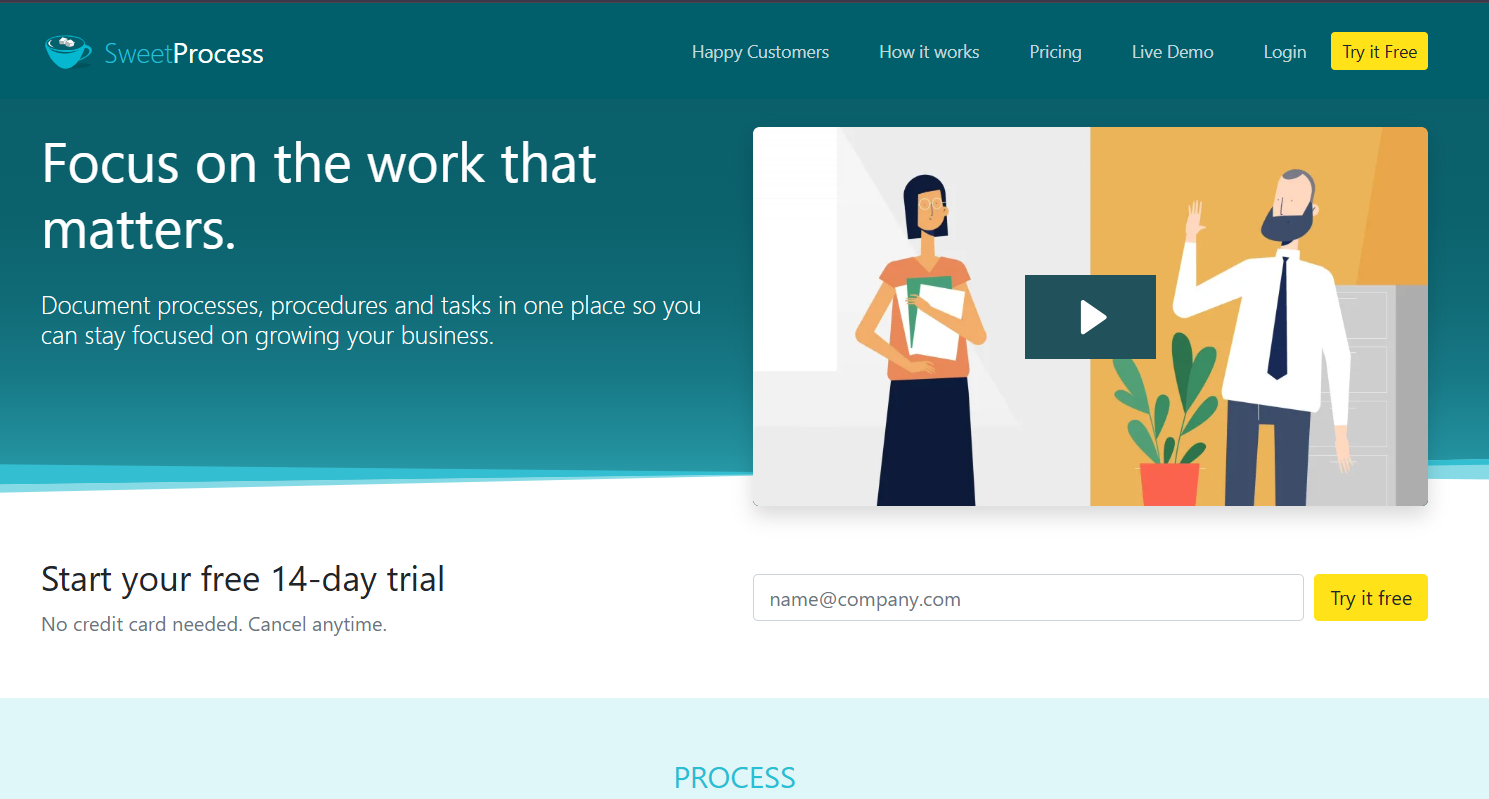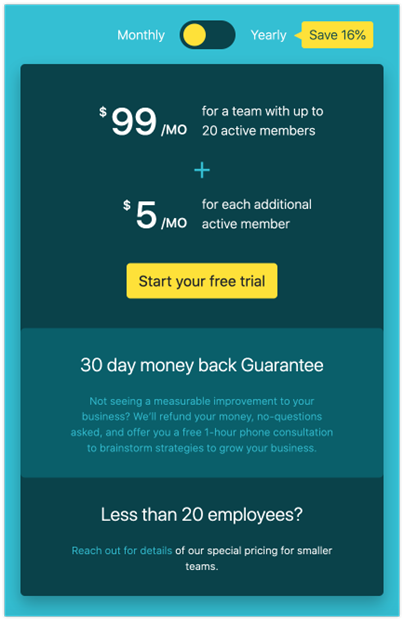Last Updated on September 14, 2025 by Owen McGab Enaohwo
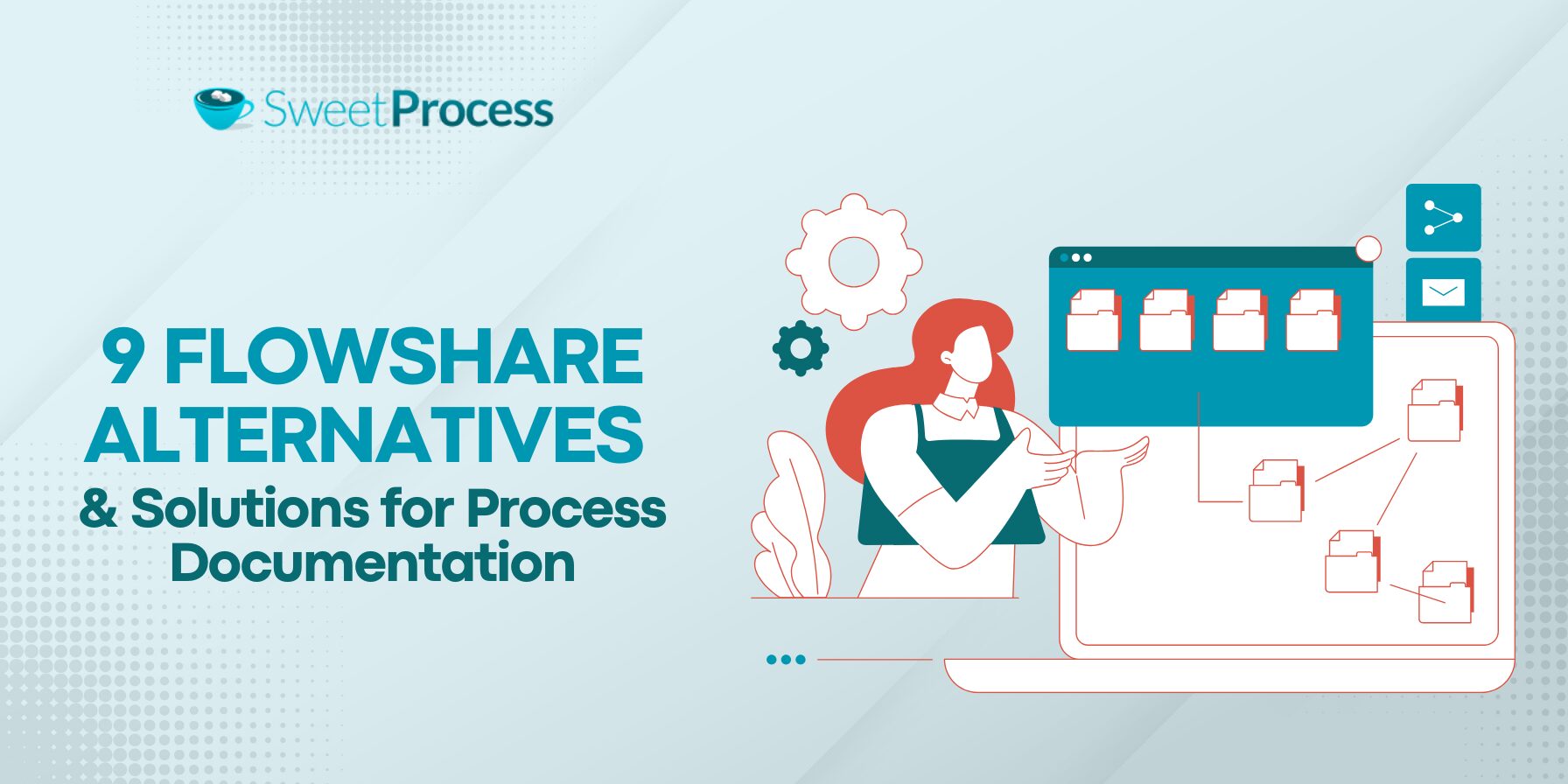
Processes are only as strong as the way they’re documented. When every team member does things their own way, small errors snowball into customer complaints and incomplete processes.
The real challenge, though, isn’t just writing things down. It’s getting people to actually use the documentation. If guides are unclear, employees ignore them and revert to asking questions.
FlowShare solves this by recording your steps and turning them into guides. However, while it’s quick and simple, it also has its limitations: exports are hard to customize, collaboration is restrictive, and scaling can get chaotic as your team grows.
That’s why we’ve compiled some of the best FlowShare alternatives that are clear, flexible, and scalable to grow with your business.
With SweetProcess, you can document your procedures and processes to make every task easier. Sign up for a two-week free trial to explore all features.
Table of Contents
Why You Might Be Considering an Alternative to FlowShare
What Are the Best FlowShare Alternatives for Capturing Step-by-Step Guides?
Which FlowShare Alternative Should You Choose for Process Documentation?
Why You Might Be Considering an Alternative to FlowShare
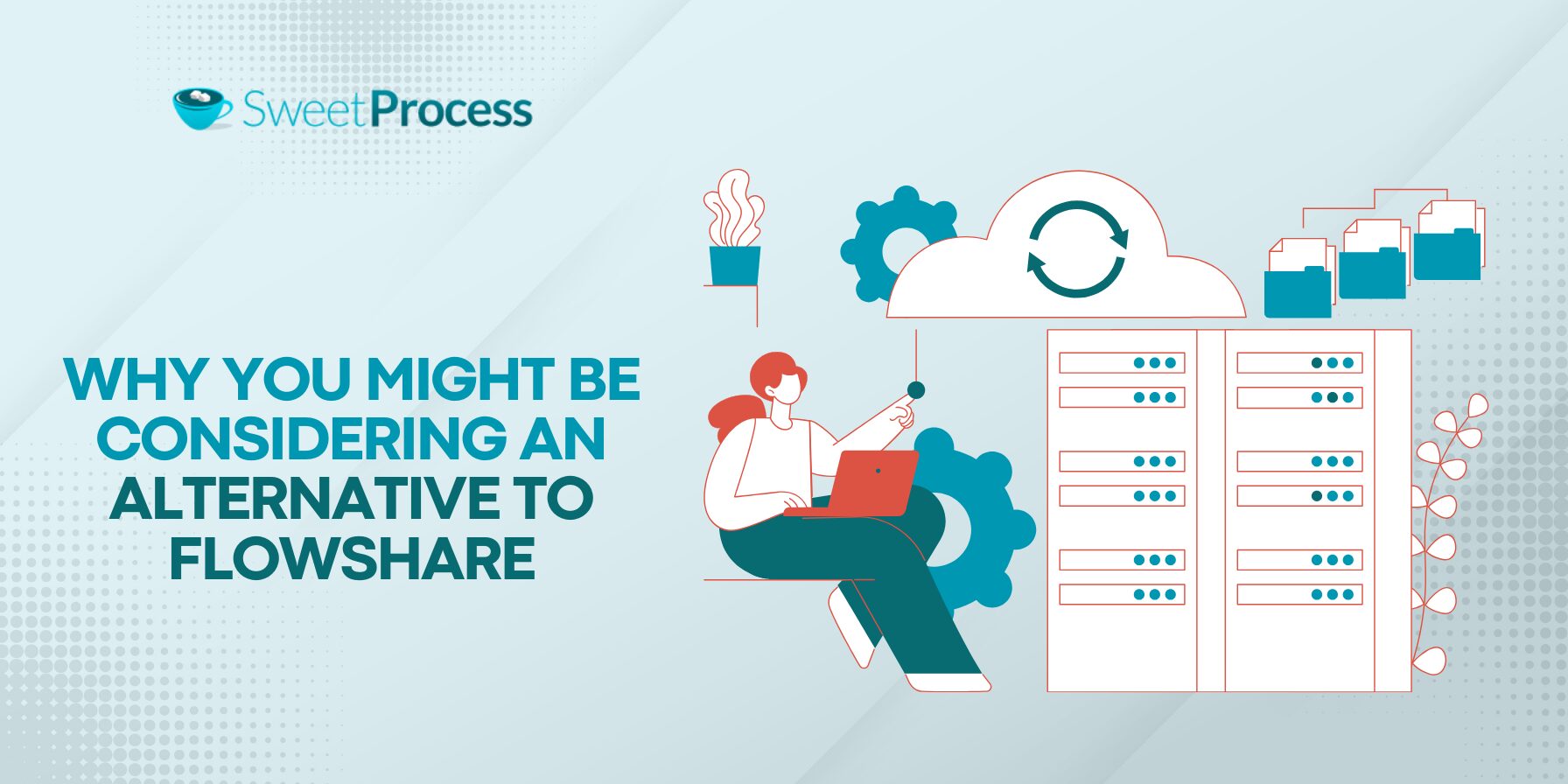
FlowShare’s desktop application automatically captures your actions as you work through a process. Every click and text input is recorded, then the tool assembles a guide with numbered steps and screenshots.
However, some drawbacks noted by users were:
1. Limited documentation capability
While FlowShare reliably captures processes and exports them into step-by-step guides, its documentation tools become restrictive once the output has been generated. Some users have noted that formatting and editing options are rigid, with little flexibility to reposition annotations or break away from template-driven layouts.
Even though guides can be exported and branded in PDF, Word, or PowerPoint, the overall design range remains narrow, which makes it harder to adapt documentation for different use cases.
2. FlowShare Assist (AI) is not customized for process documentation
FlowShare’s AI component, FlowShare Assist, provides some automation, but it isn’t fine-tuned for the nuances of process documentation. For example, recordings made in complex environments, such as Remote Desktop Protocol (RDP), can miss interactions and limit the clarity of the final guide. This means local installations are more reliable, while remote or web-based workflows may feel incomplete.
3. Frequent bugs
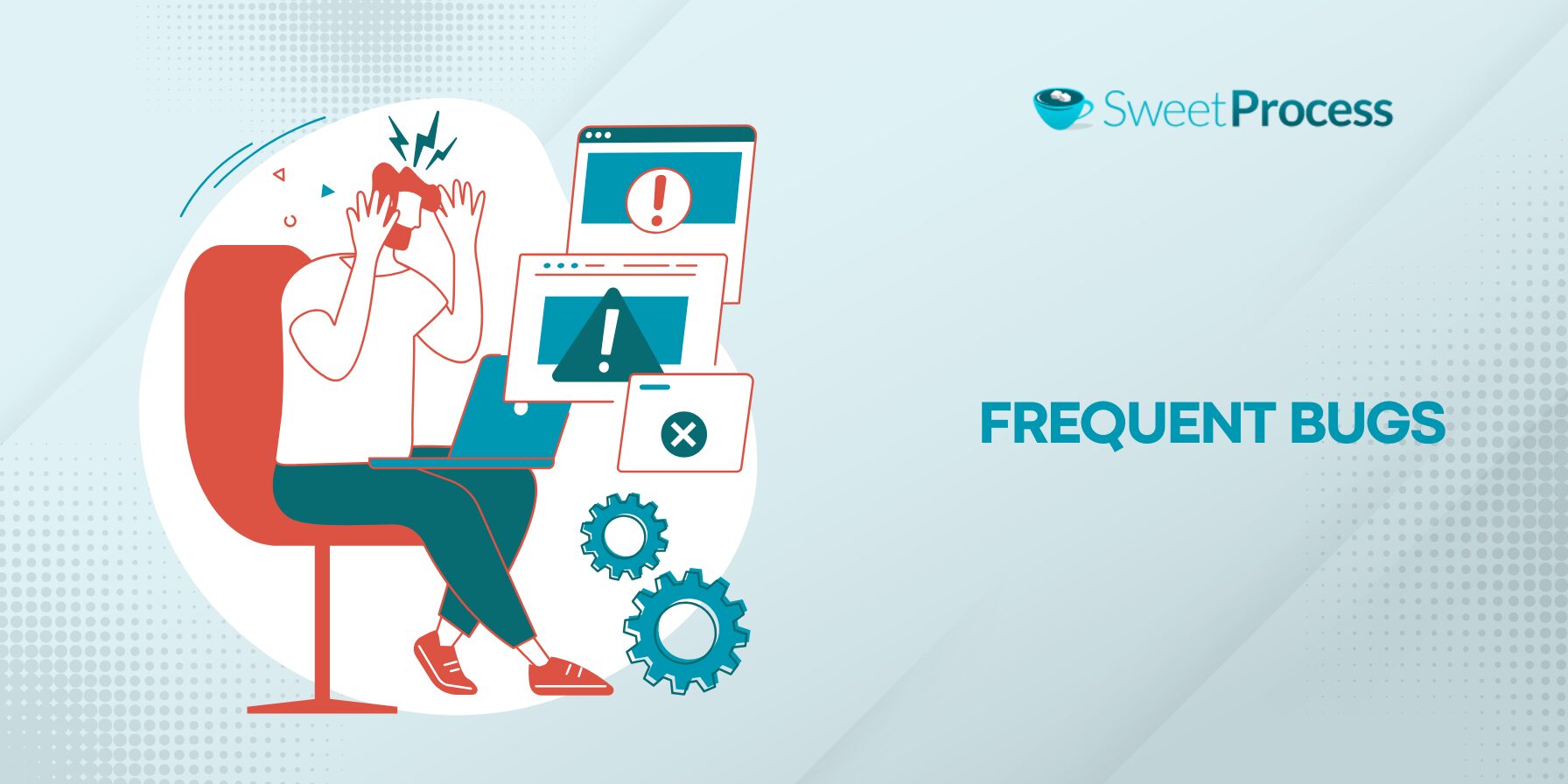
FlowShare has had recurring bug fixes ranging from misplaced arrows in guides to thumbnails rendering issues during export, as reflected in its changelog.
Some users have also reported that transferring a license is not always seamless. Since FlowShare uses a per-device licensing model, it ties activation to both a user and a device, making it cumbersome for teams working across multiple systems.
Beyond these, there’s a broader problem. When processes are complicated, productivity drops. According to Coveo, the average employee spends 3.6 hours a day just searching for information.
What Are the Best FlowShare Alternatives for Capturing Step-by-Step Guides?
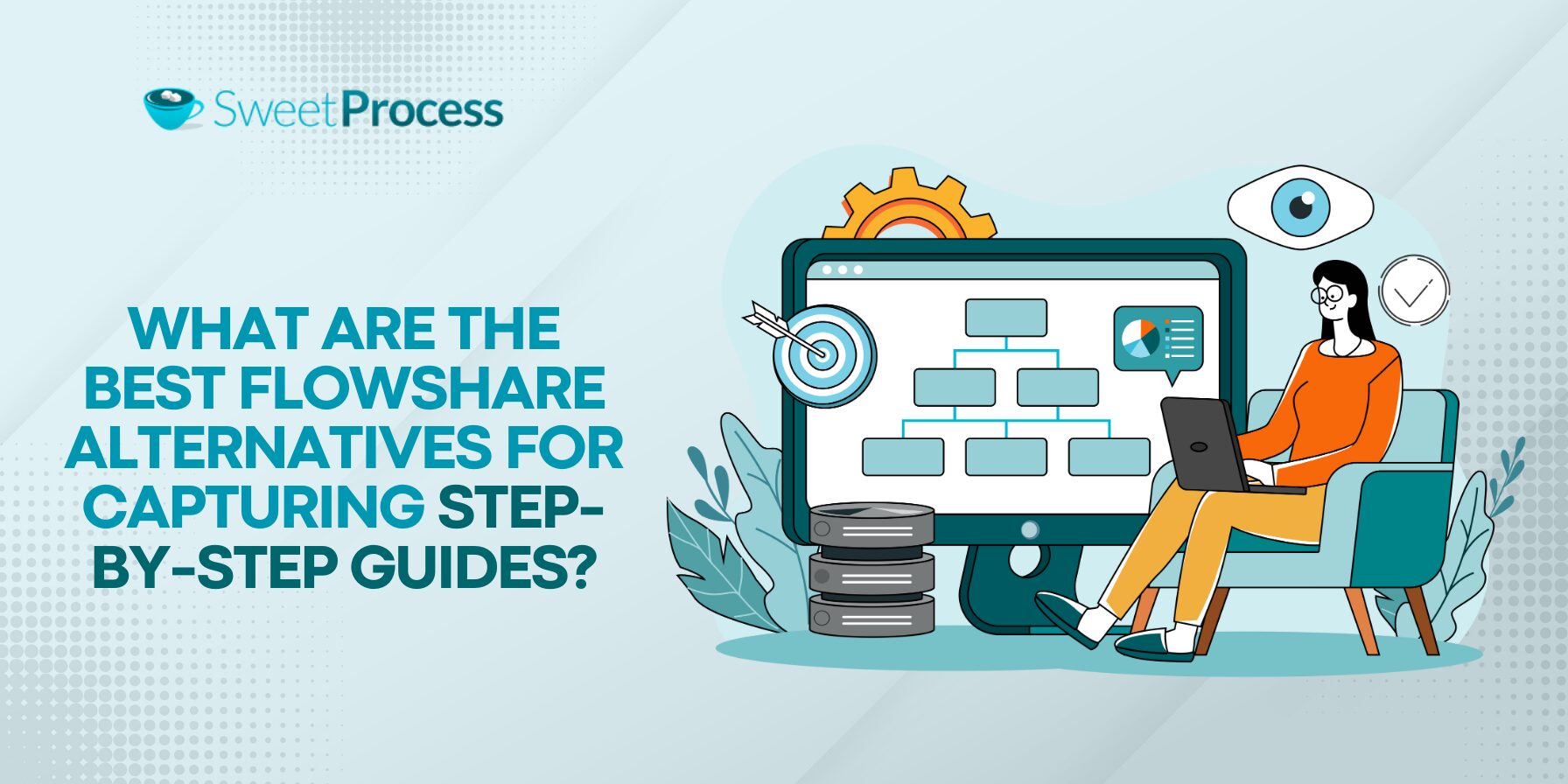
Here are some of the best FlowShare alternatives for creating step-by-step guides:
1. SweetProcess
Overview
SweetProcess is a complete tool for building and managing procedures and processes. You can draft your standard operating procedure (SOP), attach images and videos, assign tasks, and track progress.
SweetProcess also supports checklist-style tasks, file attachments, progress tracking, and exports.
What makes SweetProcess the best alternative to FlowShare?
A. AI‑enabled process documentation (SweetAI)
Rather than starting from a blank page, you can have SweetAI draft a procedure using the following steps:
1. From the Procedures tab, select “Create Procedure” and enter a title (for example, “Payment for Contractors”).

2. Click “Write with SweetAI”; the AI generates step titles and descriptions based on your topic.

3. You can also edit each step with SweetAI.
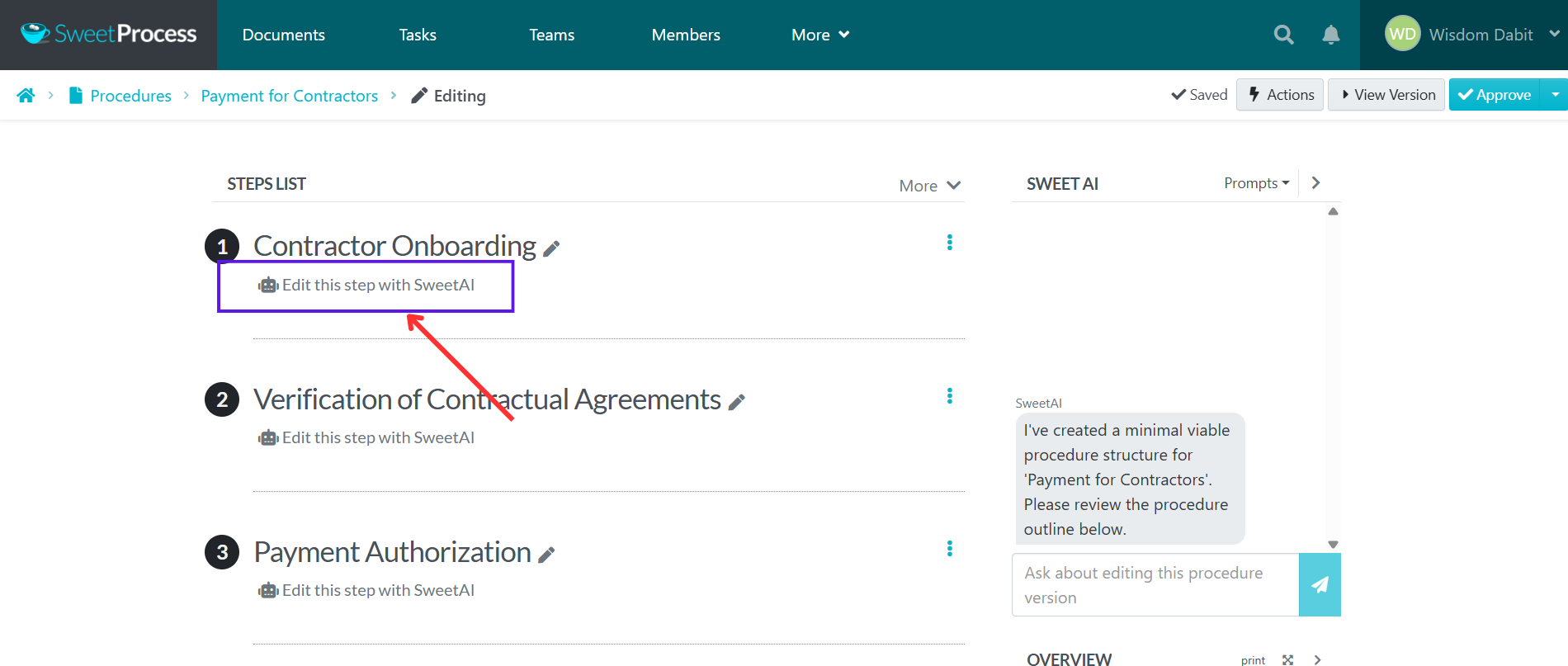
4. Or manually edit each step, embed codes in it, or attach files as needed. Click “Finished editing” once through.
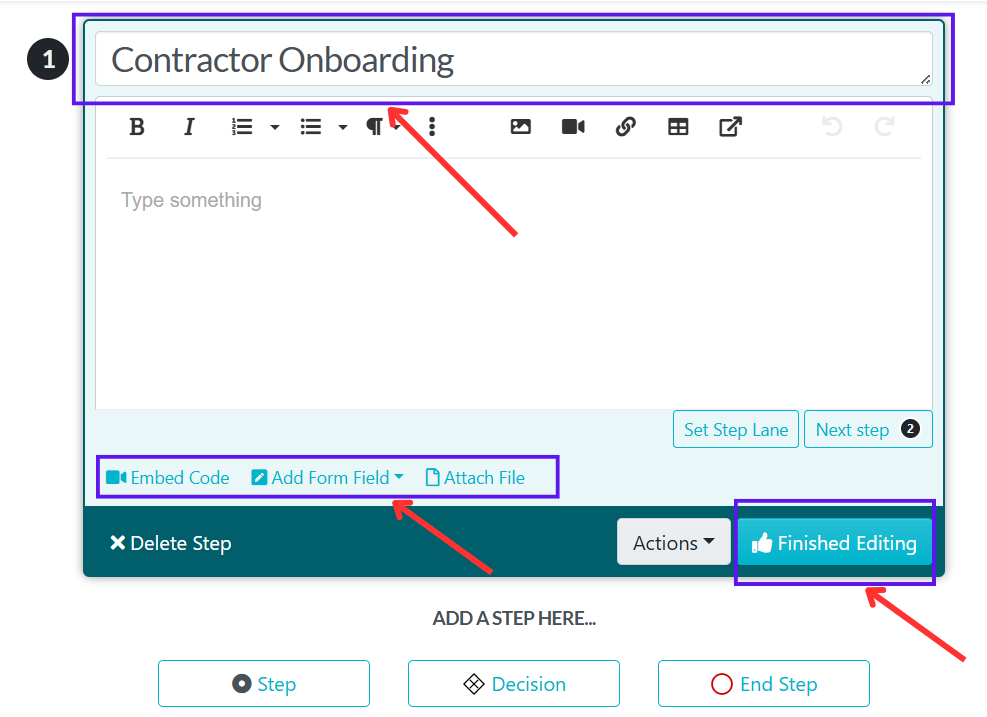
5. Finally, click “Approve” for the vetted process to go live.

Wistar Group gained an estimated $87,000 in efficiency by documenting verbal processes and moving them into SweetProcess.
According to Aspen, the President of Wistar Group, “We had written procedures, but the team wasn’t necessarily looking at the correct document. It got too complicated too quickly to be able to rely on employees finding the right information, much less using the most accurate version of the procedure documents.”
Employees now follow written procedures instead of relying on memory, and the team reclaimed hours once wasted on repeated explanations.
B. Capture steps with the Chrome recorder
When documenting a web procedure, the SweetProcess extension records clicks and keystrokes to create a visual SOP.
To document steps using the tool:
1. Install the extension: Add the SweetProcess extension from the Chrome Web Store, and pin it for easy access.
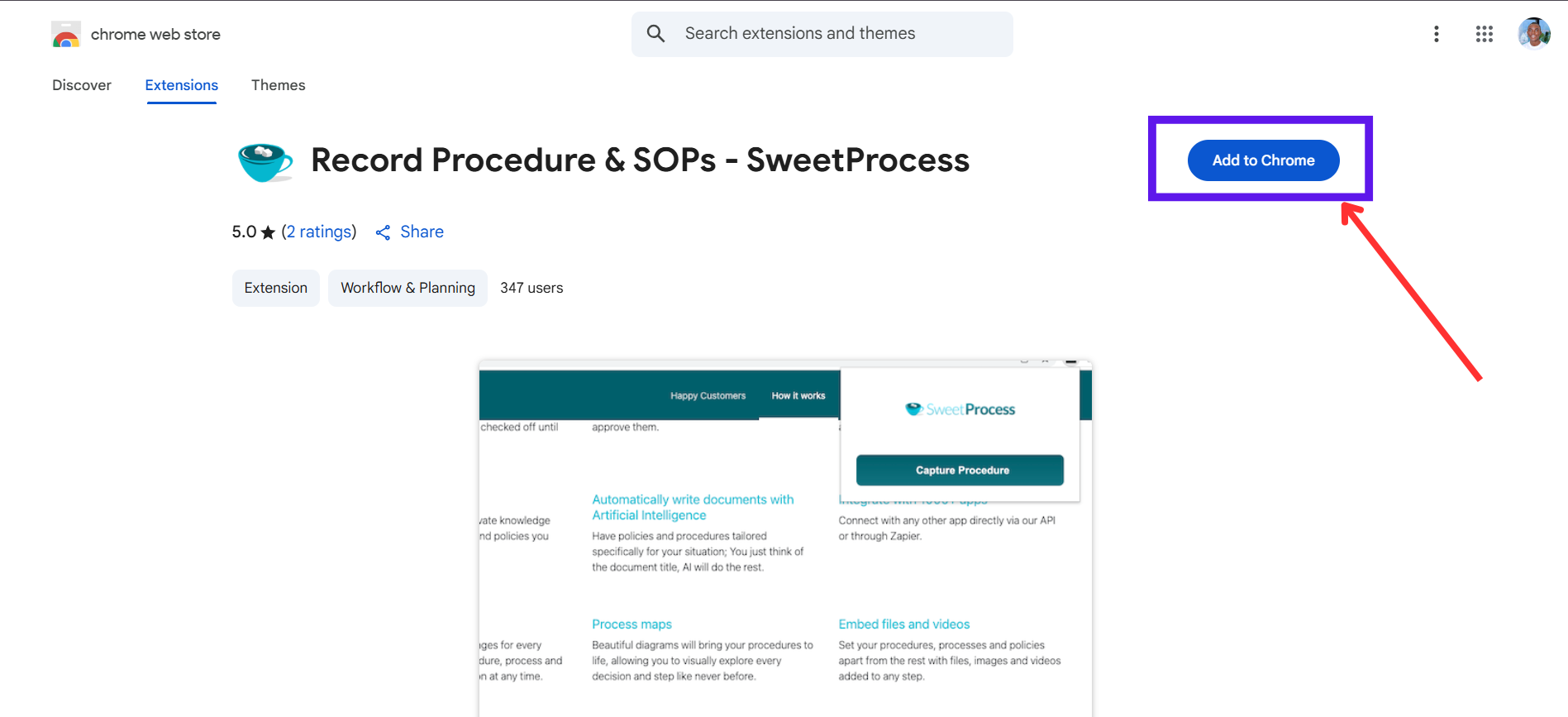
2. Capture a workflow: Navigate to the web app or site you’re documenting, click the extension, and select “Capture Procedure.” Then perform the task as normal; the extension captures screenshots and actions automatically.
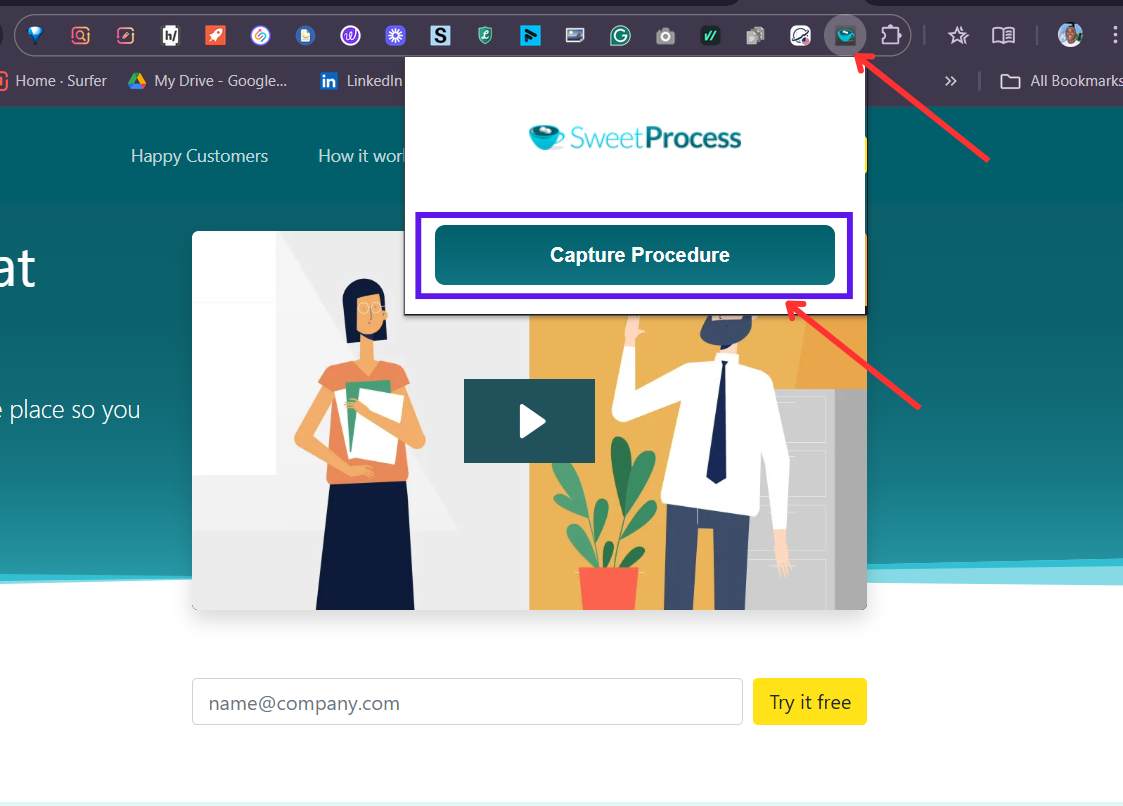
3. Stop: Stop the capture once the process is complete.
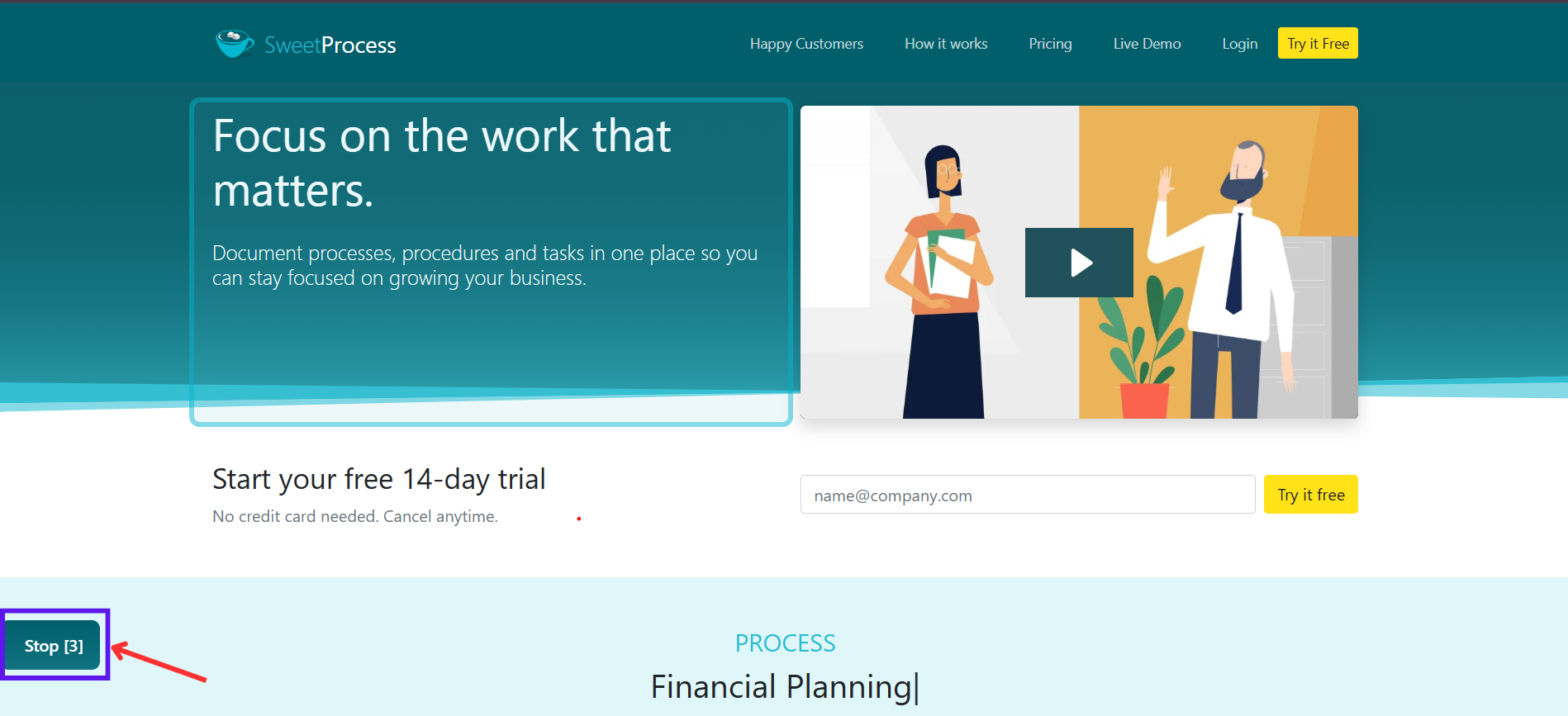
4. Redact: You can redact sensitive data before adding it to your account.
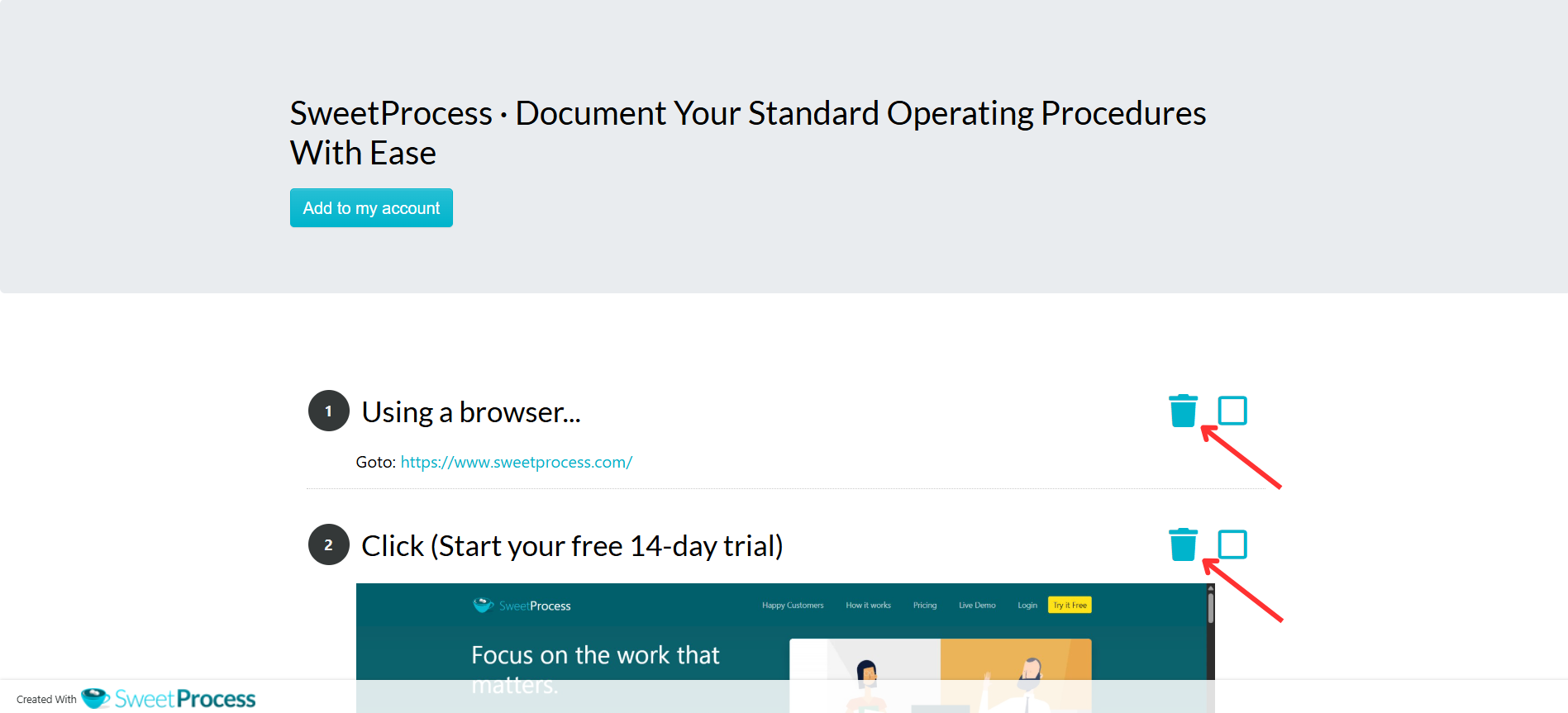
5. Edit: Make adjustments and changes to each step in the Editor.
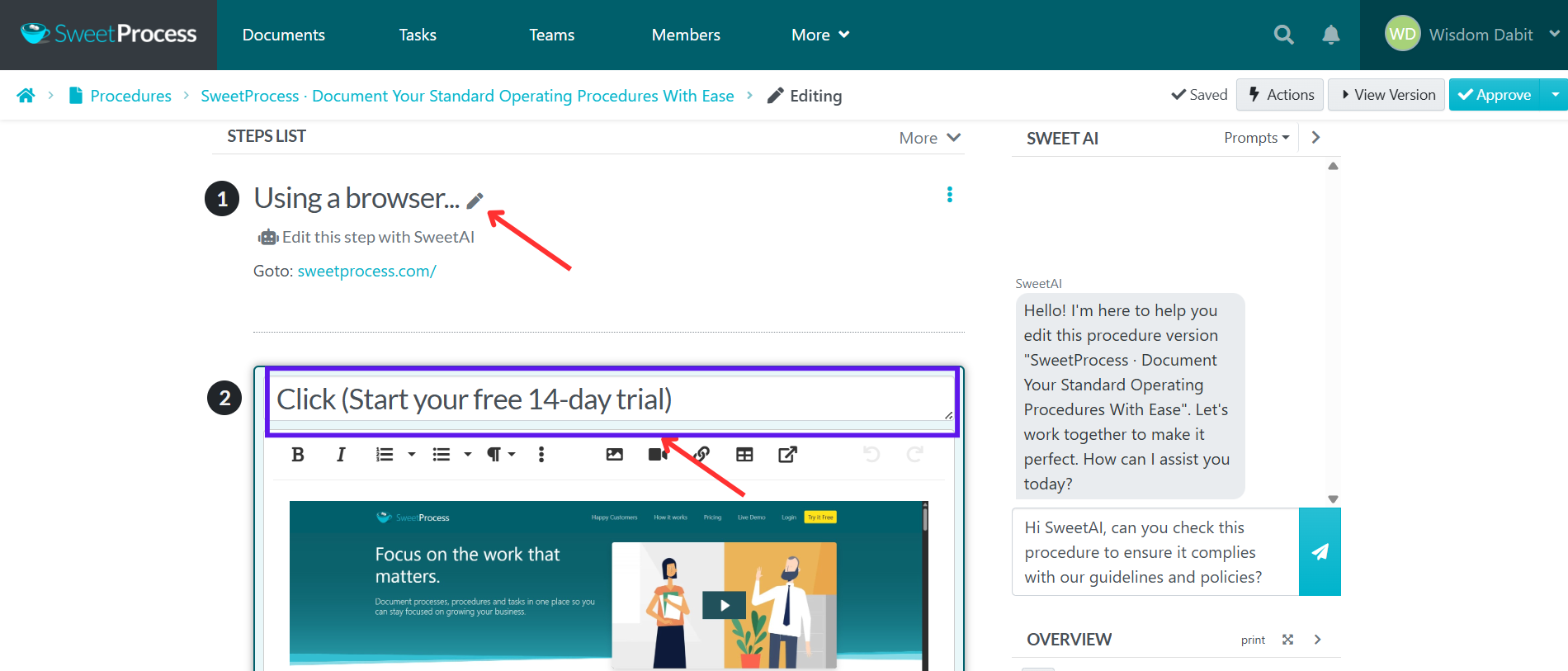
6. Approve the procedure: Click “Approve” for the procedure to be live.

The procedure is automatically saved in your SweetProcess library.
C. Customize procedures with media assets

You can use SweetProcess to make your guides scannable and engaging in the following steps:
1. Add visuals and format text: Within any step’s editor, format text with bullet points and insert images or short videos to illustrate the task.
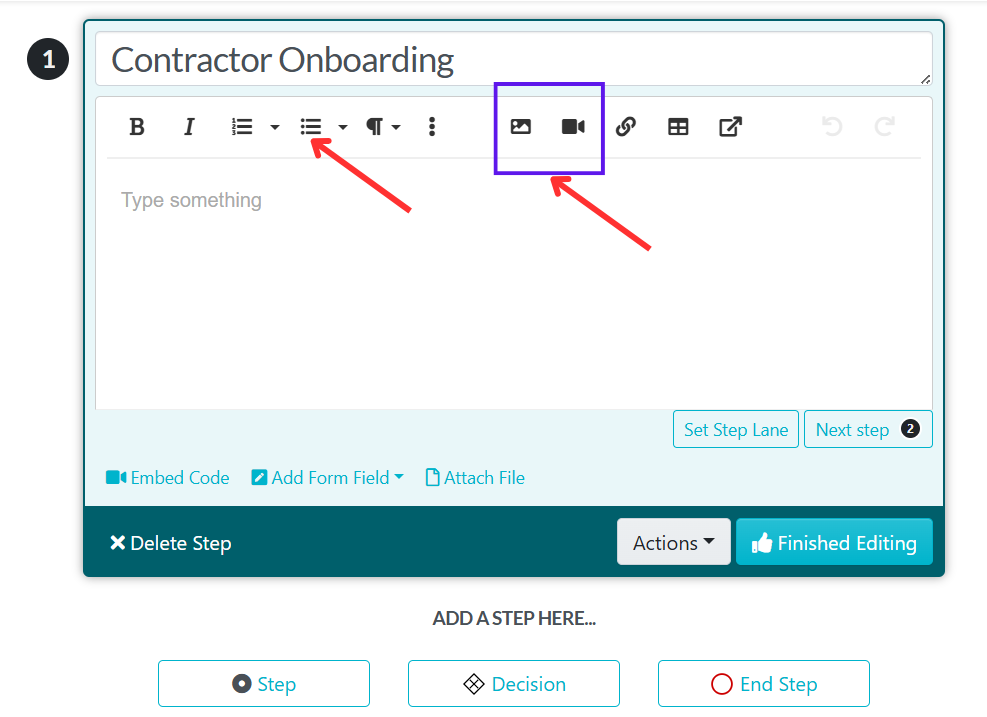
Case in point: Emazing Group. With SweetProcess, the team cut hiring and training costs by providing new hires with up-to-date SOPs to self-train.
According to Brian Lim, the Founder & CEO, “The biggest impact is when we hire new folks. SweetProcess has cut down drastically on the cost of hiring and training because we’re able to give them updated SOPs and they can read them on their own time and train themselves without having someone walk them through every step.”
Their managers no longer spend time training, because documented workflows guide their new employees.
D. Share & collaborate
SweetProcess allows you to share your processes and procedures as well as collaborate with team members.
To invite teammates:
1. Go to the “Members” tab in SweetProcess and click on “Add new member” (top-right).

2. Enter the teammate’s email, choose their team/department, and click “Add member.”
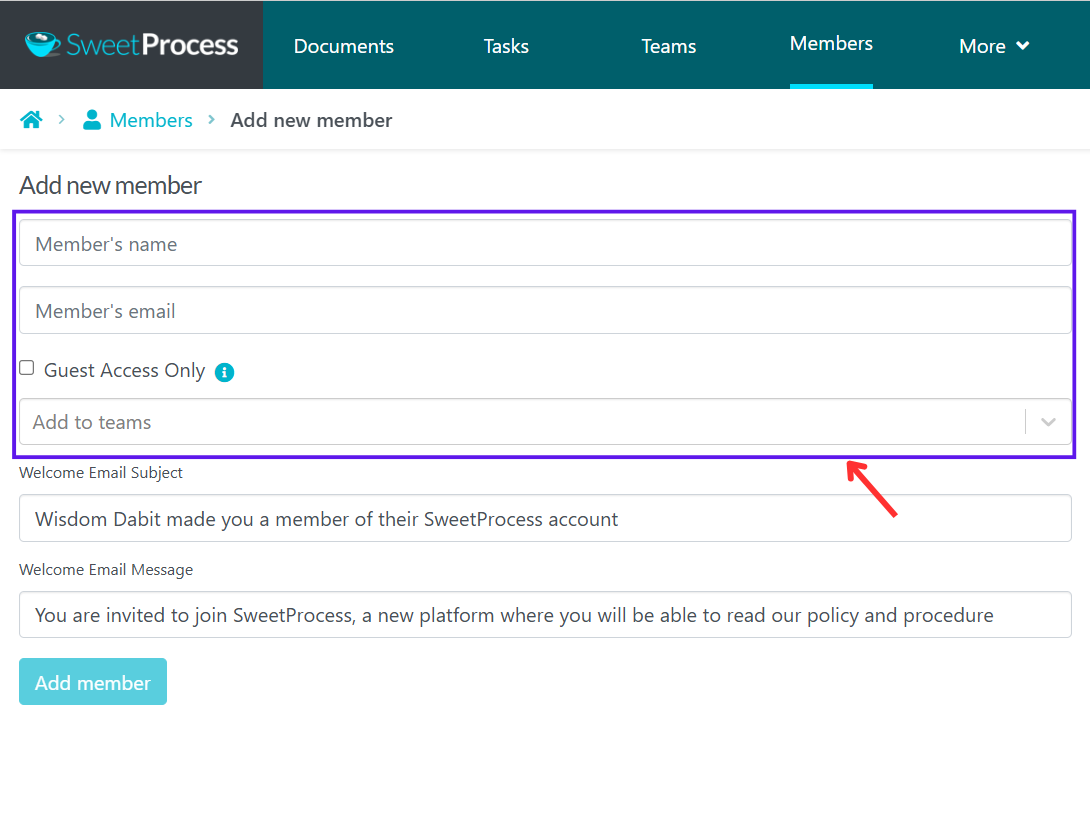
3. For limited access, toggle “Guest Access Only” (expires in 14 days).
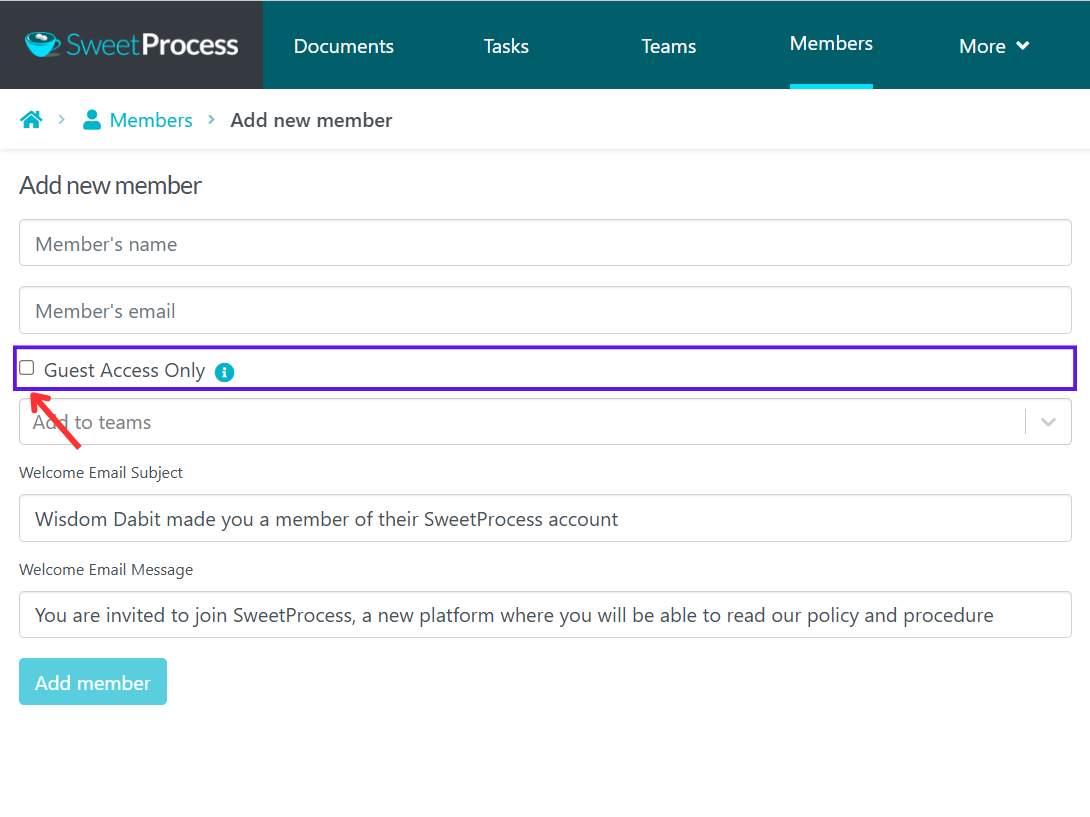
To assign procedures or tasks:
1. Open the “Procedures” tab to select the procedure of your choice.

2. Click the three dots next to it, and click “Assign as Task.”
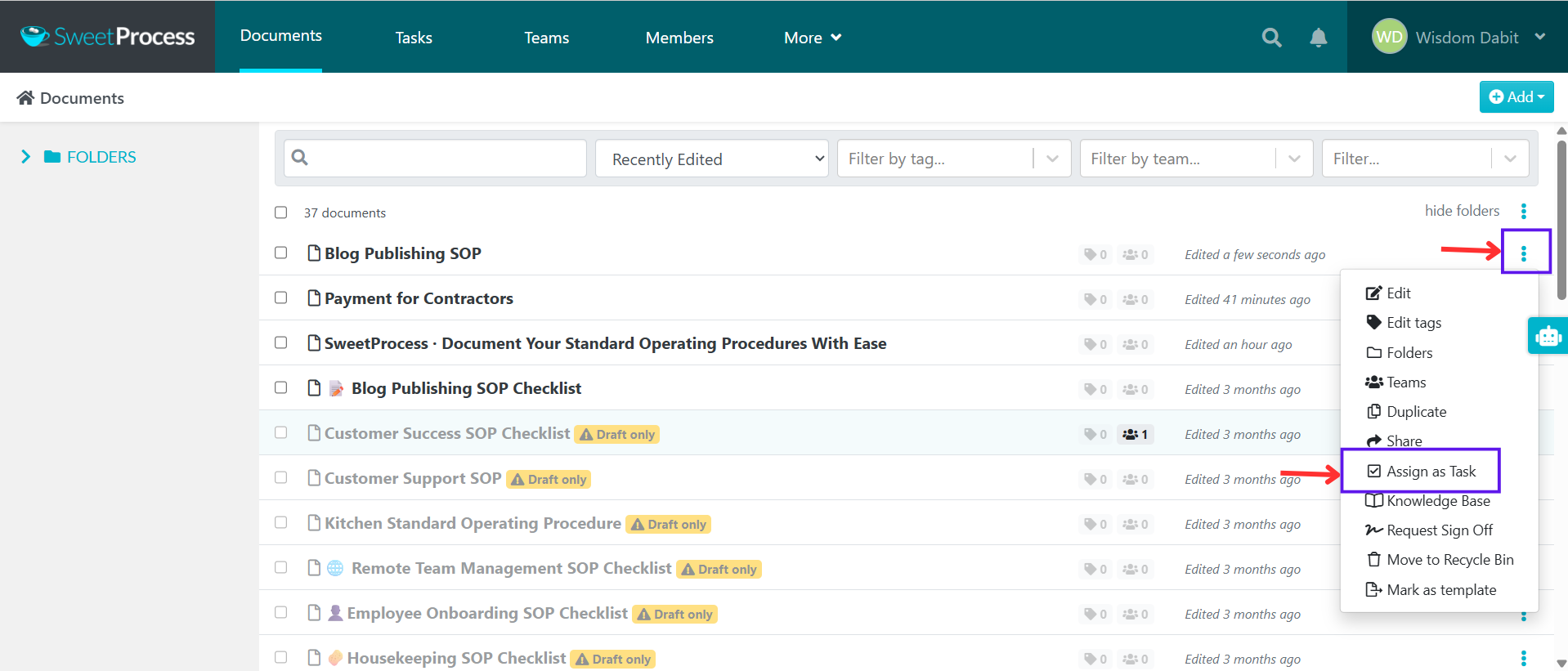
3. Then choose teammates to assign to, or invite new members.

4. Pick due dates and schedule reminders.
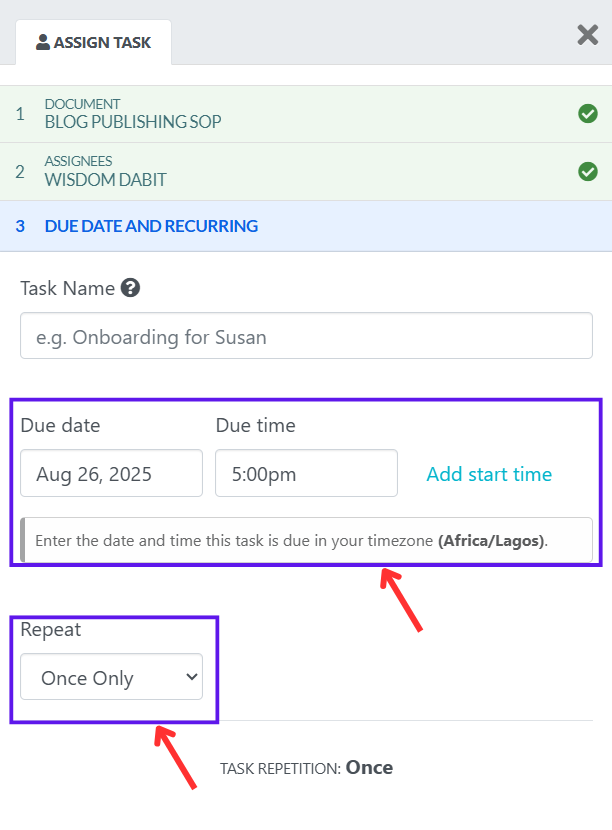
5. Click “Assign Task” once through.
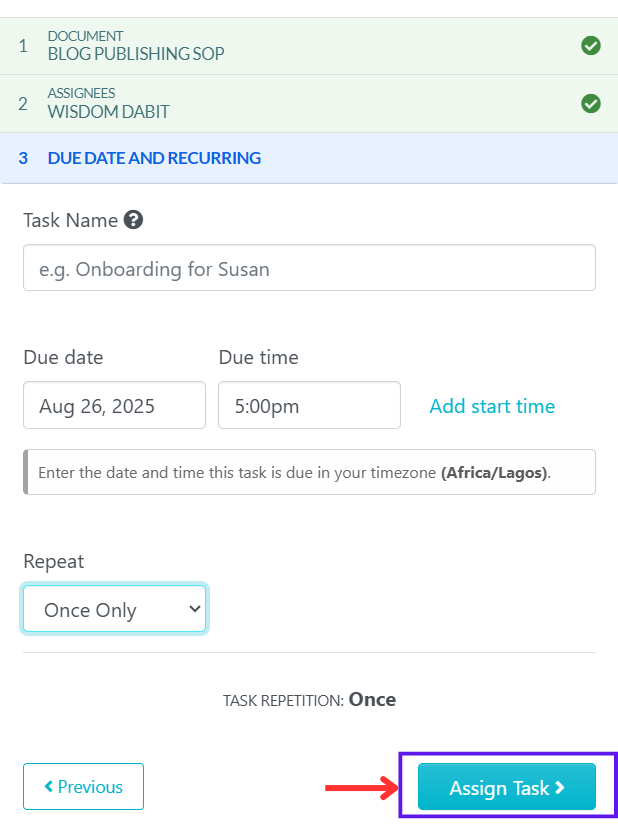
To control updates:
1. Open a procedure and add comments or tag teammates.
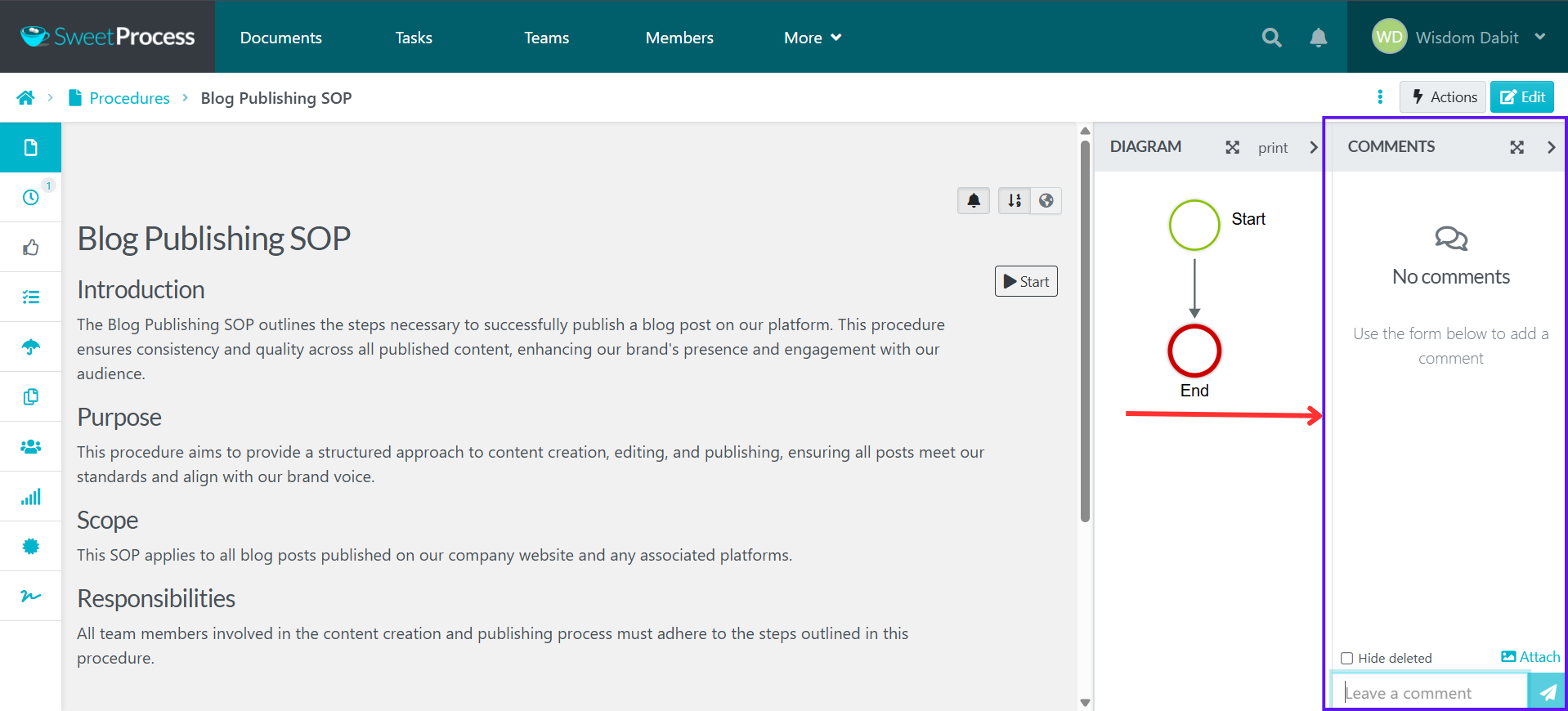
2. Click “Approve” or request approval if you need a manager’s sign-off.

3. Click the clock icon to view version history and restore older versions if needed.
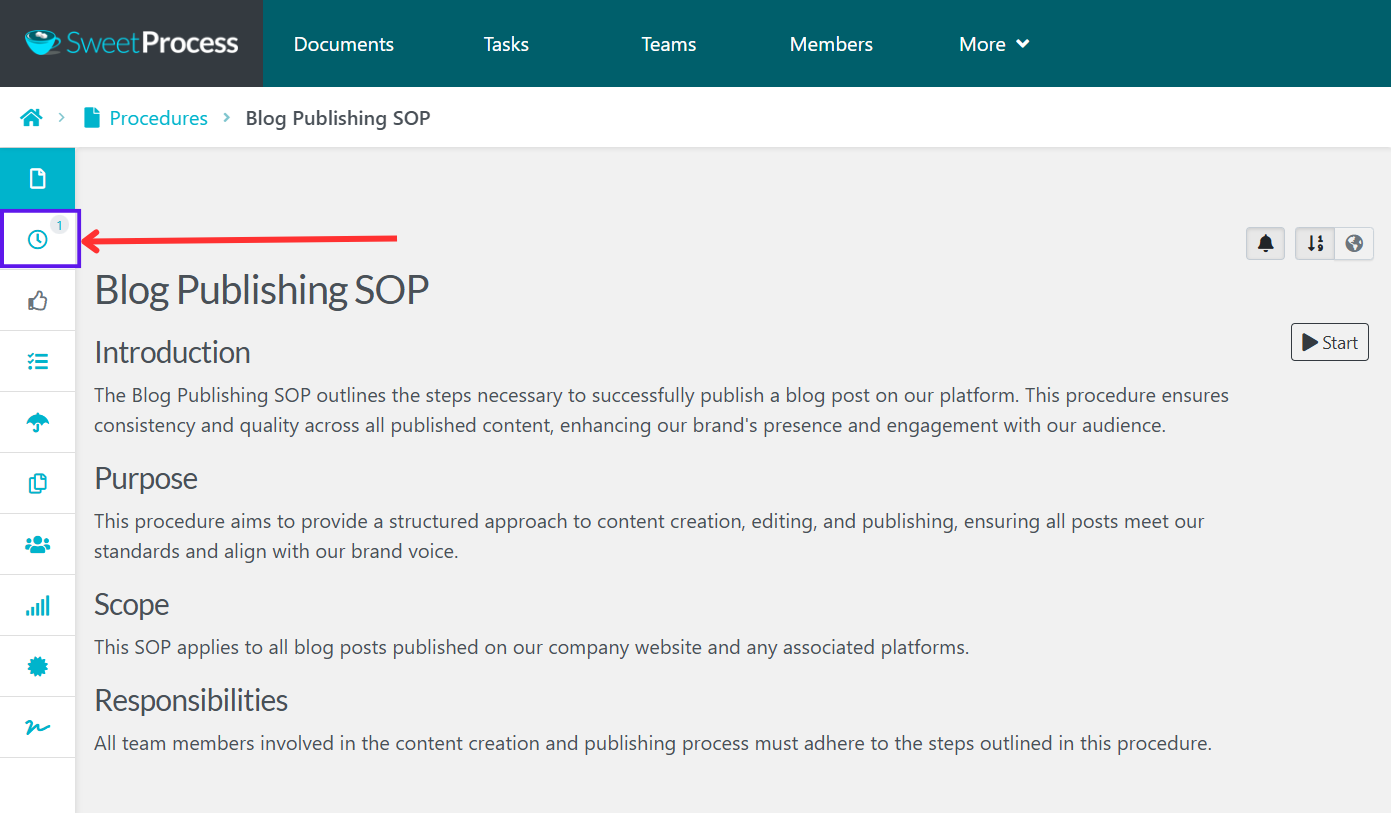
E. Organise procedures, processes, and policies
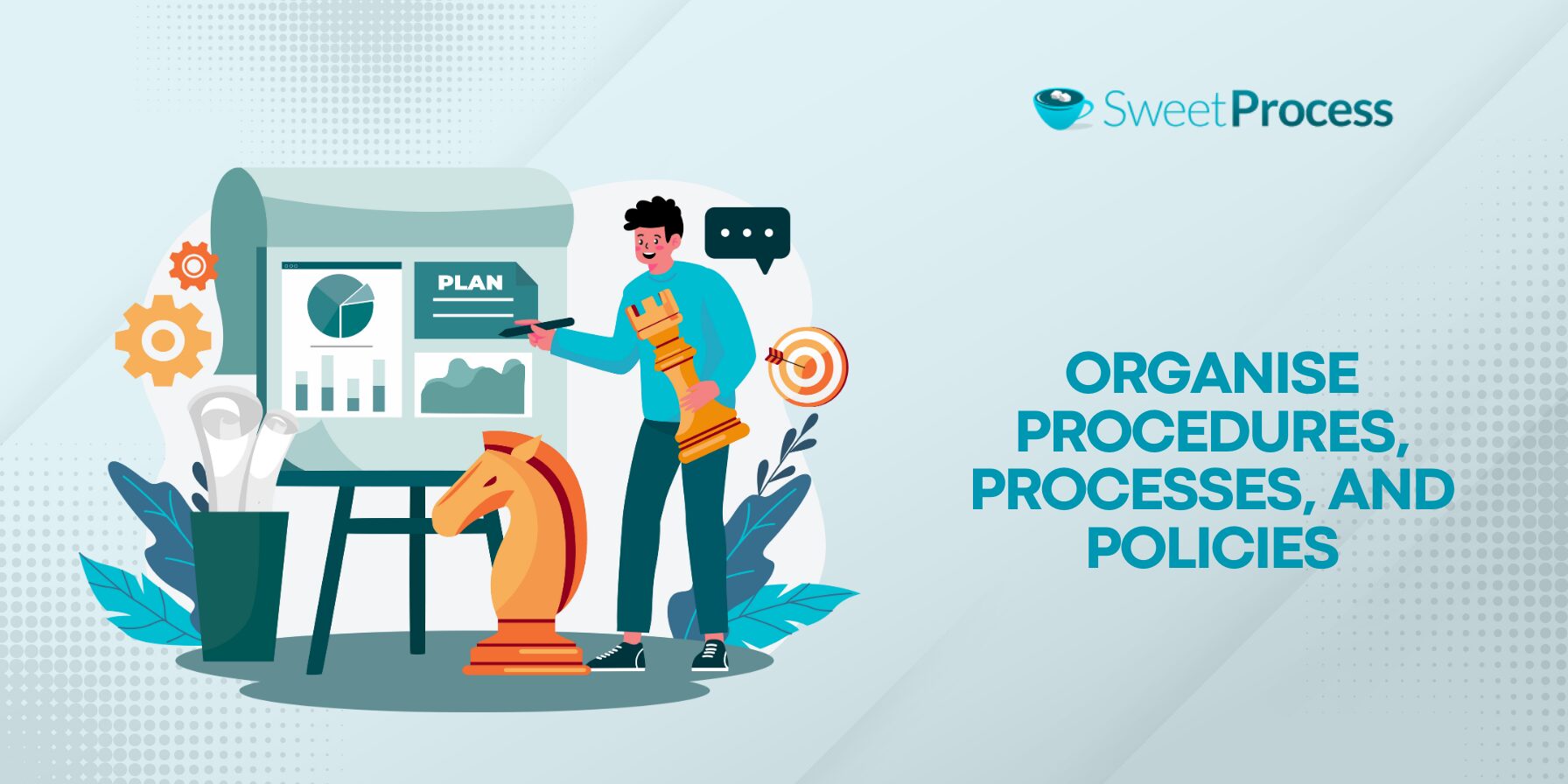
According to categories:
1. Go to “More” → “Procedures” (or “Processes” or “Policies”).

2. Filter by tag or team.

Link procedures into processes:
1. Go to “Processes” from the top bar.

2. Click “Create Process” and name it (e.g., “New Hire Onboarding”).

3. Click “Add Step,” then create or search for existing procedures like IT setup, payroll enrollment, and HR orientation to attach.
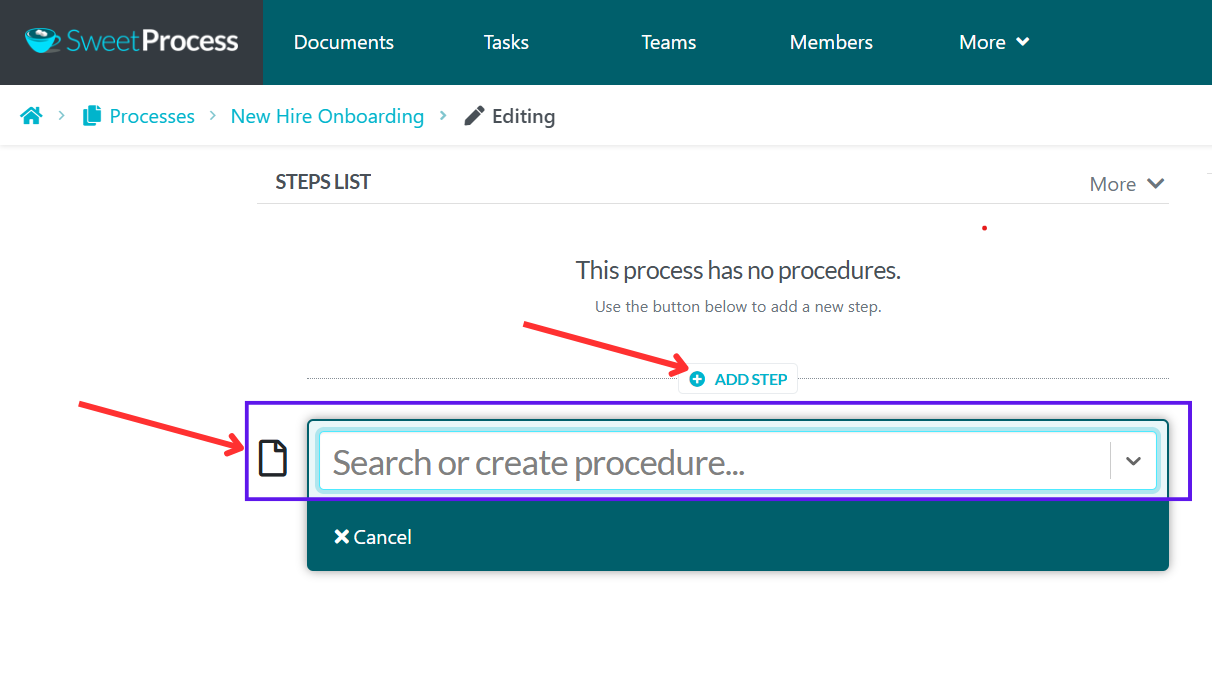
4. Save and click “Approve” so the process becomes visible to the team.

With SweetProcess, Brooks Law Group centralised its processes and made them accessible across offices to reduce interruptions.
According to Laura Johnson, the Administrator/HR at Brooks Law Group, “I’ve not known us without processes. From my perspective, we have always had processes in place. SweetProcess, though, has made it easier to access the processes. It has made it more organized because we have multiple offices.”
Staff now consult SweetProcess instead of interrupting administrators, and workflows continue smoothly even when key employees are absent.
Pricing
- A 14‑day free trial with no credit card required, then a flat monthly fee per active user (starting around $99/month for up to 20 users).
2. Dubble
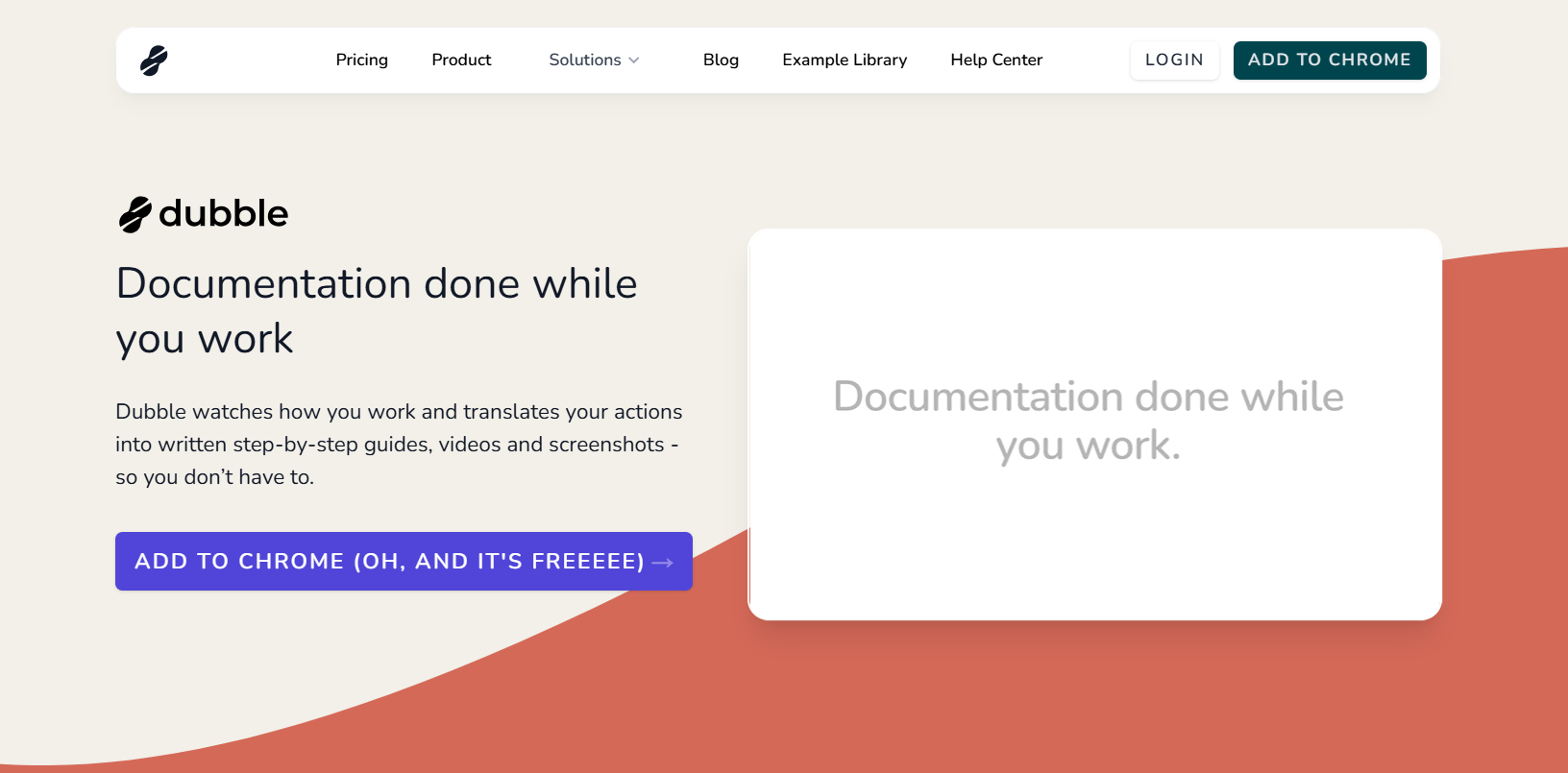
Overview
Dubble records what you do and transforms those actions into a step-by-step guide.
It works through a browser recorder extension that captures your workflow as you go, and is designed for teams that want documentation done, complete with screenshots and videos.
How Dubble differs from FlowShare
Side by side, here are the differences between Dubble and FlowShare:
| Feature | Dubble | FlowShare |
| Platform | Browser-based integration with Notion, Confluence, etc. | Windows desktop app |
| Capture format | Unlimited guides with screenshots & screencasts | Static screenshots, with a limited variety of exports |
| Collaboration | Built-in real-time collaboration on the Pro plan | Less collaborative and largely export-based |
| Price | Free tier + affordable Pro at ~$6–18/user/mo | Starts around $40/user/mo—less accessible for teams |
- Dubble syncs smoothly with Notion, Confluence, or Google Docs for quick embedding or copy-pasting.
- Its Pro plan enables video and audio capture, watermark removal, and advanced editing options.
- FlowShare, in contrast, focuses on local Windows-based capture, offering premium pricing and fewer sharing and editing flexibilities.
Pros
- Dubble’s free tier is generous.
- It integrates with popular document tools. This is ideal for knowledge hubs and internal help libraries.
- Affordable Pro pricing that scales moderately.
Cons
- Branding/removal of watermarks requires a Pro plan.
- Dubble is limited to browser and web app workflows (desktop apps support is still minimal).
- Less suitable for teams in need of sophisticated WYSIWYG (what-you-see-is-what-you-get) editing or advanced process governance.
Pricing
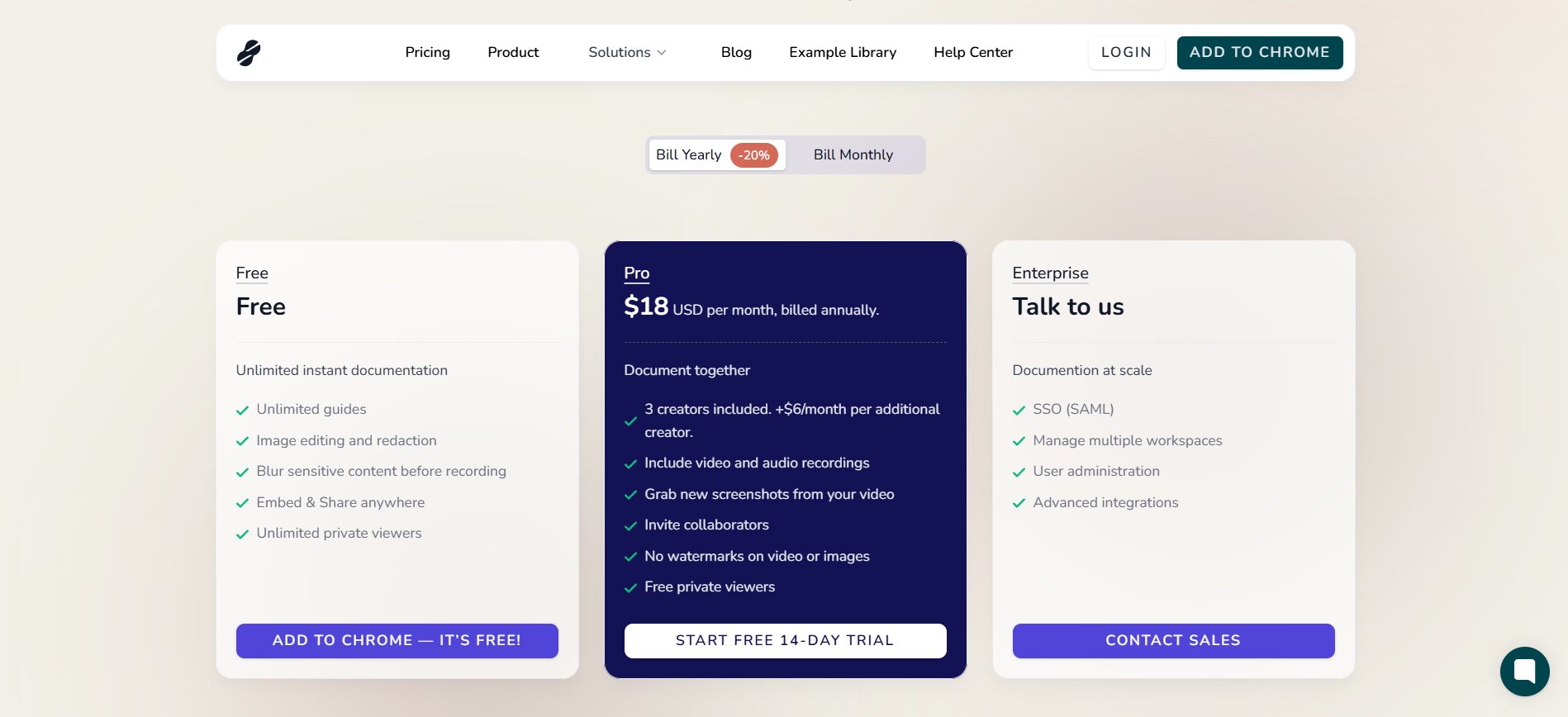
- Free Plan: Unlimited guides, screenshots, and embedding; watermark included.
- Pro Plan: Starts at $18/user/month (billed annually) with three included creators and $6 for each additional creator. Includes video/audio capture, watermark removal, and team collaboration.
- Enterprise: Custom-priced with SSO, multiple workspaces, and admin controls.
Verdict
- Use Dubble if you want to embed guides into your existing tools and value affordability and collaboration.
3. Scribe
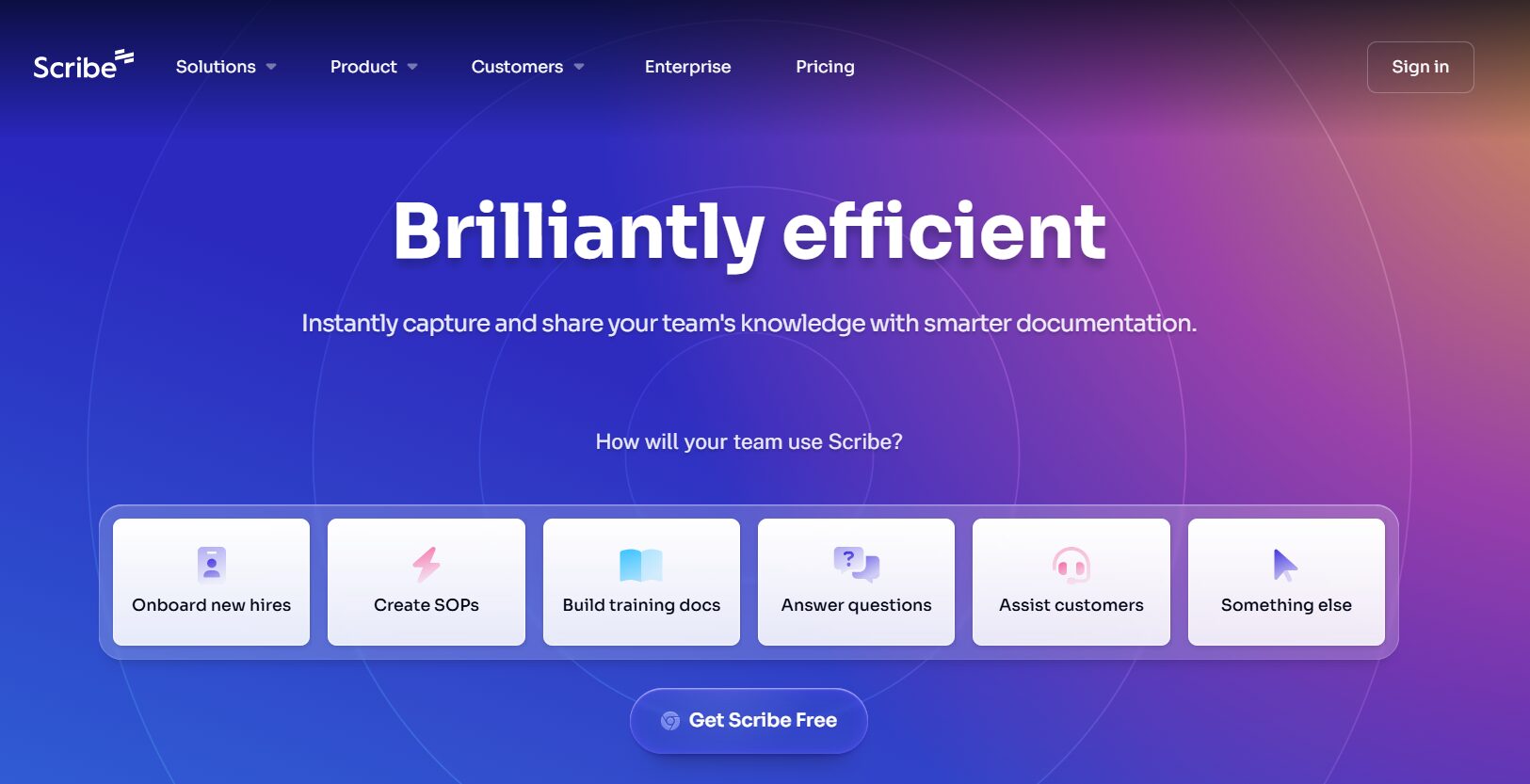
Overview
Scribe is a process documentation tool that automatically creates step-by-step guides whenever you record a workflow.
It works both as a browser extension and a desktop app (Windows/Mac).
How Scribe differs from FlowShare
Here’s how Scribe stacks up against FlowShare:
| Feature | Scribe | FlowShare |
| Platform compatibility | Browser extension and desktop app (Windows/Mac) | Windows-only desktop app |
| Guide creation | Auto-captures clicks/keystrokes and generates annotated step-by-step guides | Tracks actions manually, which requires manual screenshot naming |
| Editing & formatting | Edit text, redact sensitive info, add branding, reorder steps | Advanced formatting and export options, but less intuitive |
| Sharing | Share via link, embed in CMS, export to PDF, and embed in Sidebar (Sidekick) | Export to multiple formats, but share via file or FlowShare Portal |
| Pricing | Free tier; Pro Team ~$12/user/mo; Pro Personal ~$23/user/mo | Starts around $40/user/month for a desktop-only license |
- Scribe supports cross-platform use, while FlowShare is limited to Windows.
- Scribe is faster for web and hybrid workflow documentation, thanks to its browser extension, while FlowShare works better for desktop-only, structured processes.
- FlowShare’s exports are more polished, but Scribe has more sharing flexibility.
Pros
- Scribe extension works on both web and desktop.
- Intuitive editor: redaction, branding, and changing layouts in Scribe are simple.
- Cloud sharing and in-app overlay (via Sidekick) make guides instantly accessible.
Cons
- The free plan is restrictive (no PDF export, as well as limited branding).
- Premium features can get expensive for larger teams.
- Some users report that screenshots are sometimes misaligned, and advanced editing tools are limited.
Pricing
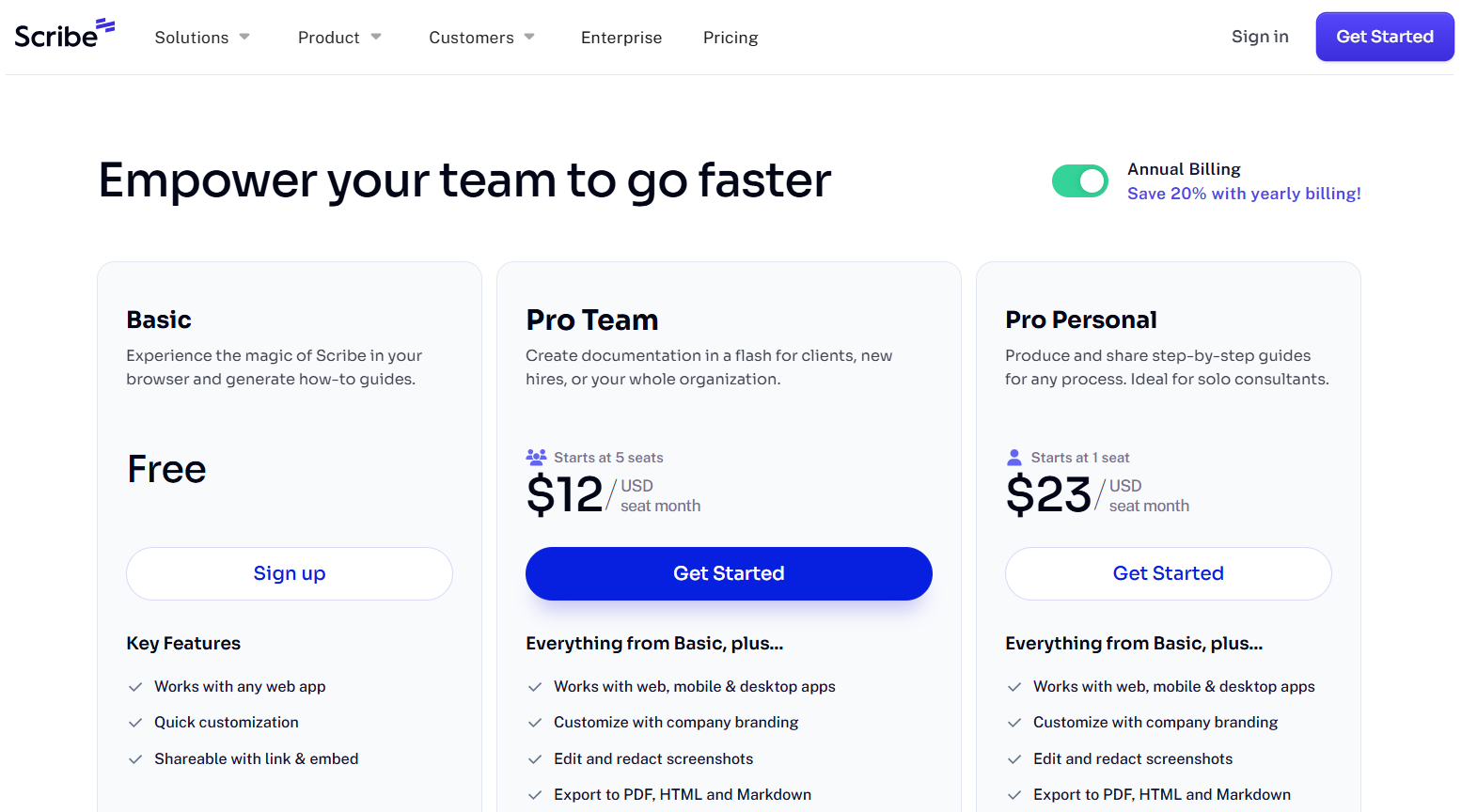
- Basic (Free): Browser extension, basic editing, link sharing.
- Pro Team: ~$12/user/month. Team collaboration with more flexibility.
- Pro Personal: ~$23/user/month. Adds desktop capture, PDF/HTML exports, and custom branding.
- Enterprise: Custom pricing with SSO and admin controls.
Verdict
- Choose Scribe if you need speed, cross-platform support, and effortless sharing.
Here’s our comparison of SweetProcess and Scribe.
4. WalkMe
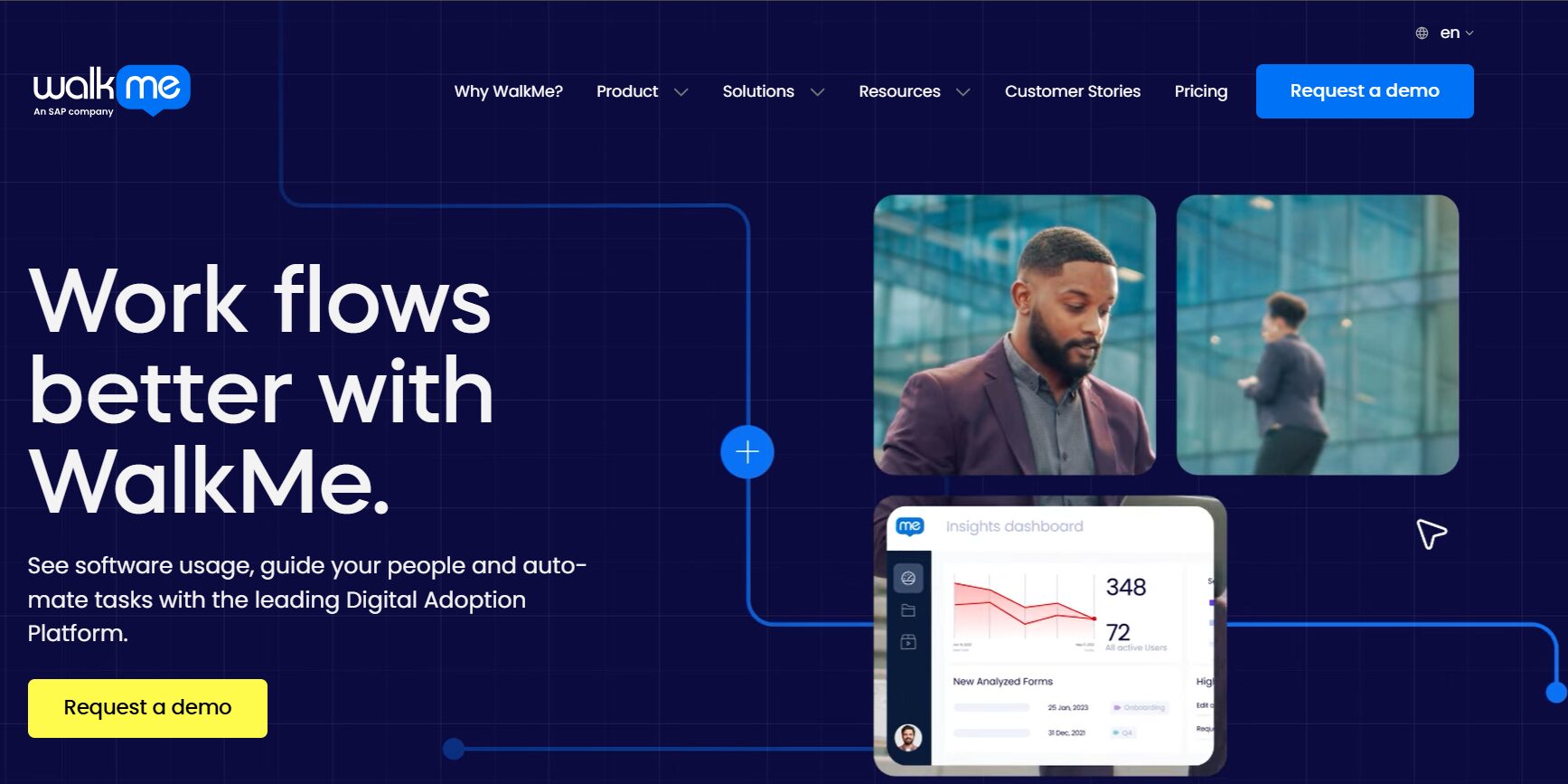
Overview
WalkMe is a Digital Adoption Platform (DAP) built for large enterprises.
Instead of creating static step-by-step guides like FlowShare, it embeds interactive guidance directly into applications using tooltips, walkthroughs, and chatbot-style support via its ActionBot.
It also doubles as an analytics engine by tracking where users struggle in software workflows to give product teams insights to optimize onboarding and training.
How WalkMe differs from FlowShare
A closer look at where they differ:
| Feature | WalkMe | FlowShare |
| Guidance delivery | Interactive walkthroughs inside apps (tooltips, walkthrough bubbles, ActionBot) | Static step-by-step exported guides (PDF, HTML) |
| Targeting & analytics | Segmentation and in-depth analytics on user behavior and workflow friction points | Minimal analytics; primarily tutorial generation |
| AI capabilities | Includes ActionBot for context-aware support and automation | Mainly instructional assistance |
| Implementation & maintenance | Heavy setup, which often requires IT/dev support and ongoing maintenance | Lightweight capture; minimal setup required |
| Pricing | Pricing is not publicly listed | Starts at $40/user/month for a single license |
- WalkMe turns your app into an interactive learning environment.
- It’s built for enterprises that need analytics and segmentation, not just tutorials.
- FlowShare is far quicker and cheaper to deploy, but it lacks the real-time guidance and intelligence that WalkMe delivers.
Pros
- Advanced walkthroughs, tooltips, and contextual help.
- Robust analytics dashboards to pinpoint UX issues.
- ActionBot adds conversational automation for repetitive tasks.
- Great for large-scale training + onboarding across departments.
Cons
- Pricing is unknown.
- Implementation takes time and requires dedicated owners.
- Overkill for small-to-mid teams who just want lightweight documentation.
Pricing
- WalkMe’s pricing is not publicly listed.
Verdict
- If you’re a large enterprise rolling out complex software, WalkMe’s in-app support and insights are unmatched.
5. Whatfix
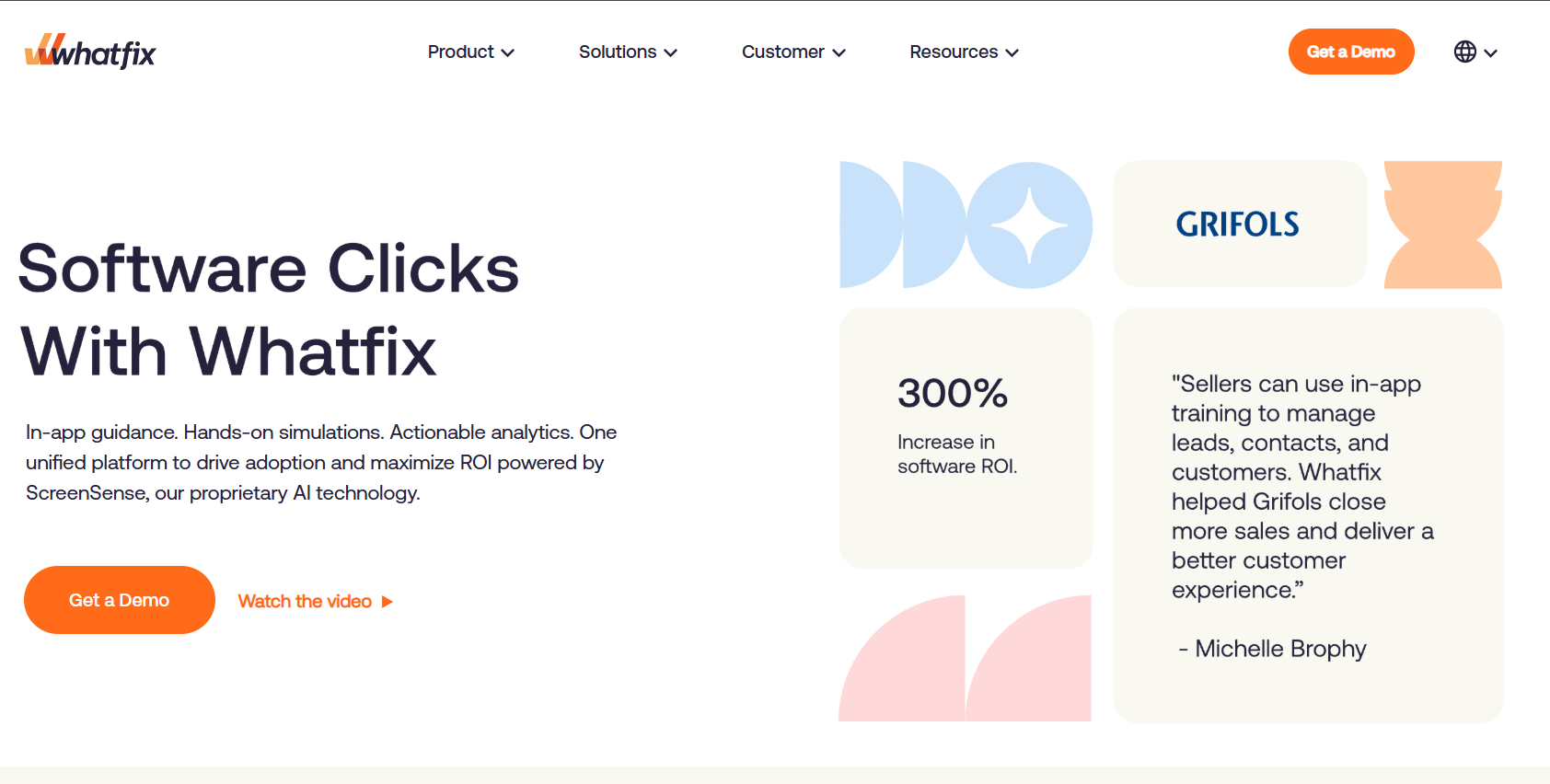
Overview
Whatfix is a Digital Adoption Platform (DAP) designed to overlay interactive guidance like tooltips and tours directly into web, desktop, and mobile apps.
It supports in-app onboarding and training with analytics and performance insights. Whatfix even auto-generates PDFs and videos from your walkthroughs for more flexibility.
How Whatfix differs from FlowShare
Here’s a head-to-head comparison of Whatfix and FlowShare:
| Feature | Whatfix | FlowShare |
| Guidance delivery | In-app, interactive tooltips, flows, and checklists | Static guide exports (PDF, HTML) |
| Supported platforms | Web, desktop, and mobile (including virtual desktops) | Windows desktop only |
| Output formats | Multiple (video, PDF, shipments from walkthrough) | Static documents/manuals |
| Analytics & insights | Behavior tracking, adoption metrics, dashboards | Minimal or no analytics |
| Implementation/Set-up | Intuitive editor and contextual guidance, but enterprise complexity | Quick capture; low setup efforts |
- Whatfix embeds help inside the app rather than delivering external docs.
- It supports mobile and web applications, as well as virtual desktop environments, while FlowShare remains on Windows.
- Walkthroughs can be exported to videos, PDFs, and embedded format, while FlowShare provides static exports only.
Pros
- Multi-form output: Convert guidance into videos, PDFs, or emails with a click.
- Cross-platform: Works in desktop, web, mobile (native), and virtual apps.
- In-app analytics: Capture usage and adoption trends.
- Solid support & onboarding: Reliable and easy to use.
Cons
- Pricing is unknown.
- Complex UI and content maintenance: updating flows after app changes can be laborious.
- Analytics setup may require technical effort and a steep learning curve.
Pricing
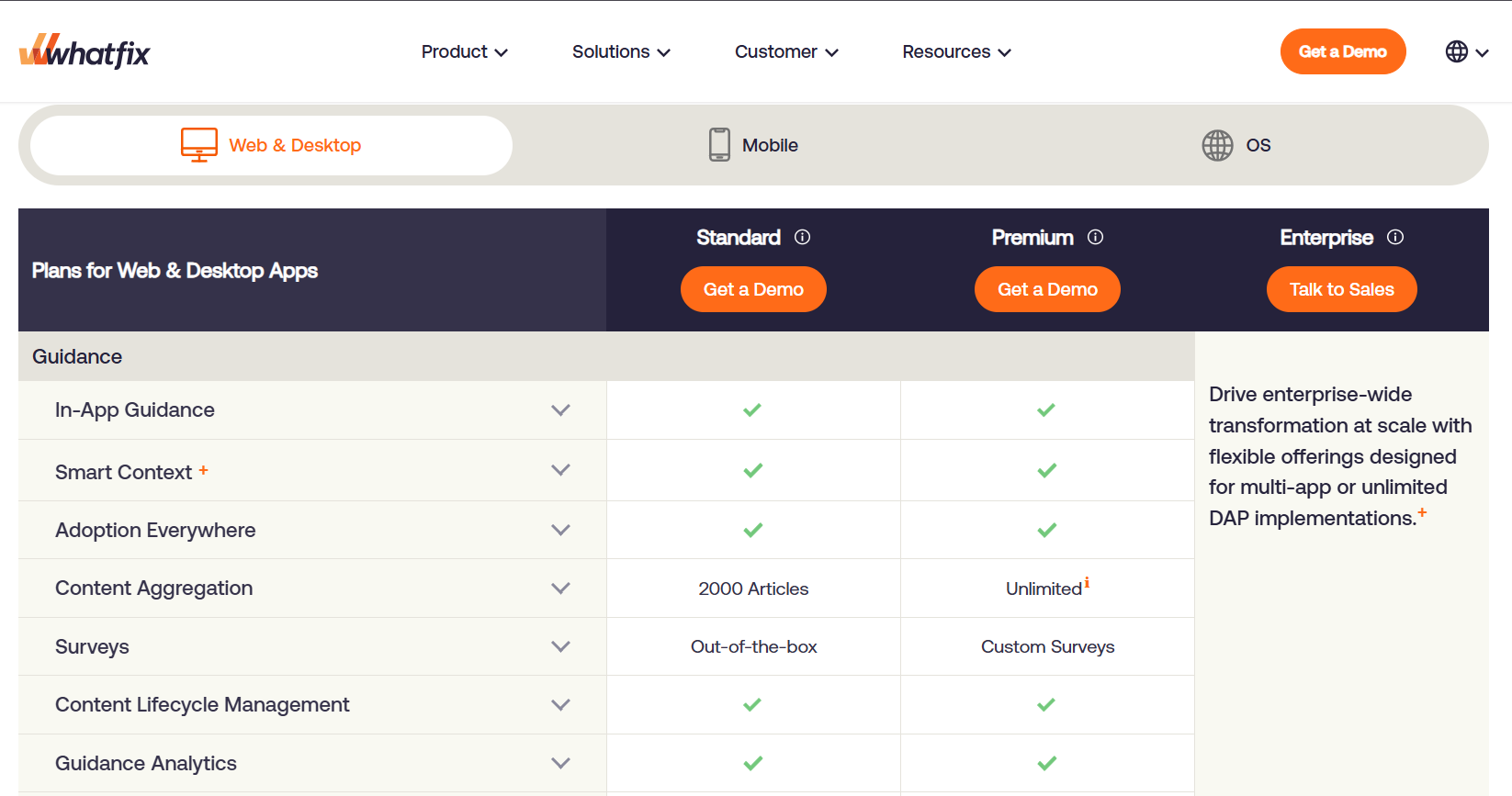
- Standard / Premium / Enterprise: all custom quote-based; no public rates.
Verdict
- Use Whatfix if your priority is contextual, in-app help with multiple output formats, and you’re an enterprise ready to invest in user adoption intelligence.
6. UserGuiding
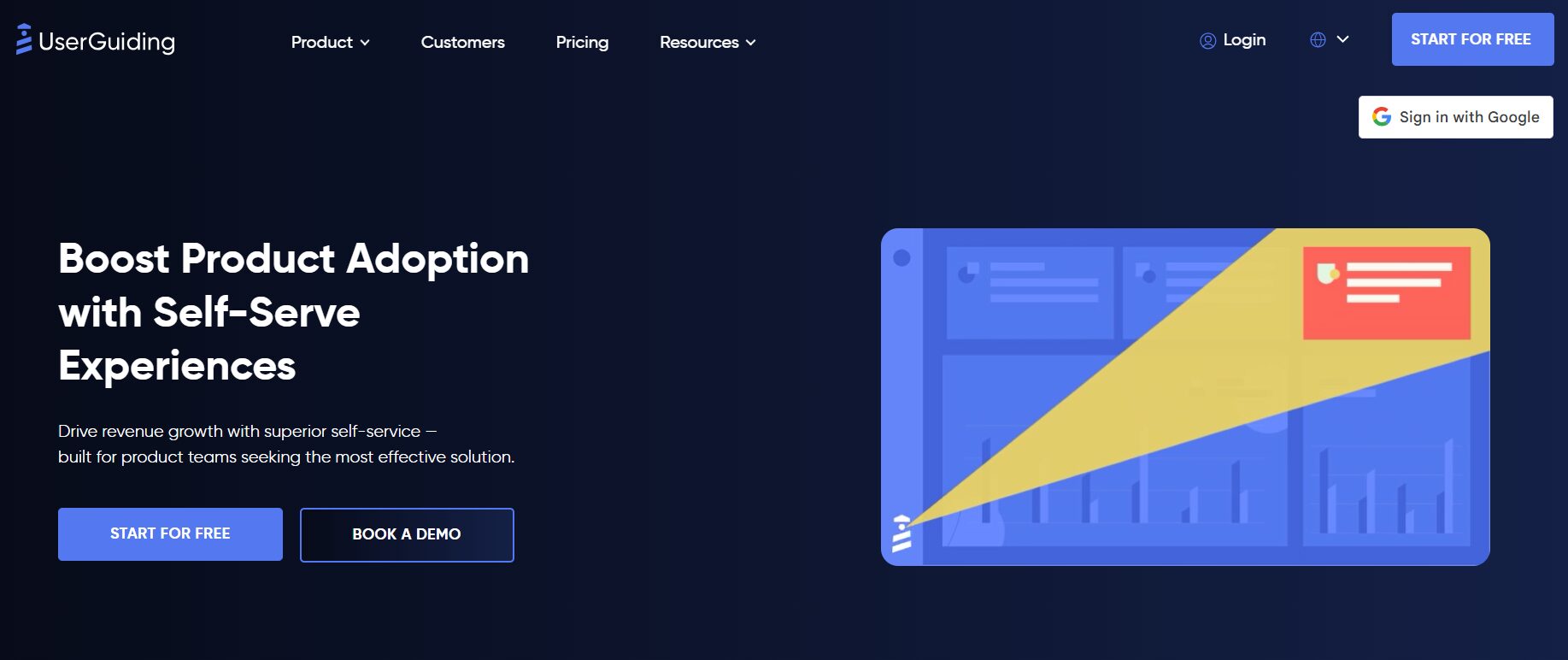
Overview
G2 rating: 4.7/5
UserGuiding is a no-code onboarding platform that helps teams build interactive product tours, tooltips, checklists, resource centers, and in-app surveys.
Unlike FlowShare, which focuses on documentation that captures what you do, UserGuiding delivers guidance inside your web app to increase adoption and reduce support queries. It’s web-only and doesn’t support native mobile apps.
How UserGuiding differs from FlowShare
The differences between UserGuiding and FlowShare are:
| Feature | UserGuiding | FlowShare |
| Guidance delivery | In-app tours, tooltips, checklists, surveys, and Knowledge Base | Static step-by-step exported manuals (PDF, HTML, etc.) |
| Platform support | Web-based only (not native mobile) | Windows desktop app only |
| User onboarding Tools | Built-in templates, resource centers, and change logs | Manual documentation only—no built-in adoption tools |
| Customization & segmentation | Full branding, UI customization, targeting | Limited cosmetic branding in exports only |
| Pricing structure | Free plan, then based on MAUs and plan tiers. Starter Plan costs $174/mo (annual) | Flat-per-user license—$40/user/mo. |
- UserGuiding offers guided onboarding experiences inside apps, and not in separate documents.
- It supports content dashboards and change logs, whereas FlowShare leaves internal search and updates to folders.
- Starter plan covers up to 2,000 MAUs for $174/month, which is more transparent and tiered than FlowShare’s per-user model.
Pros
- No-code setup is great for product, support, or growth teams.
- Rich set of onboarding assets: tours, checklists, surveys, and resource centers.
- Affordable entry price relative to enterprise DAPs.
Cons
- Web-only; doesn’t support mobile or desktop apps.
- MAU limits might require upgrades as your user base grows.
- Advanced analytics/features are only in higher tiers.
Pricing
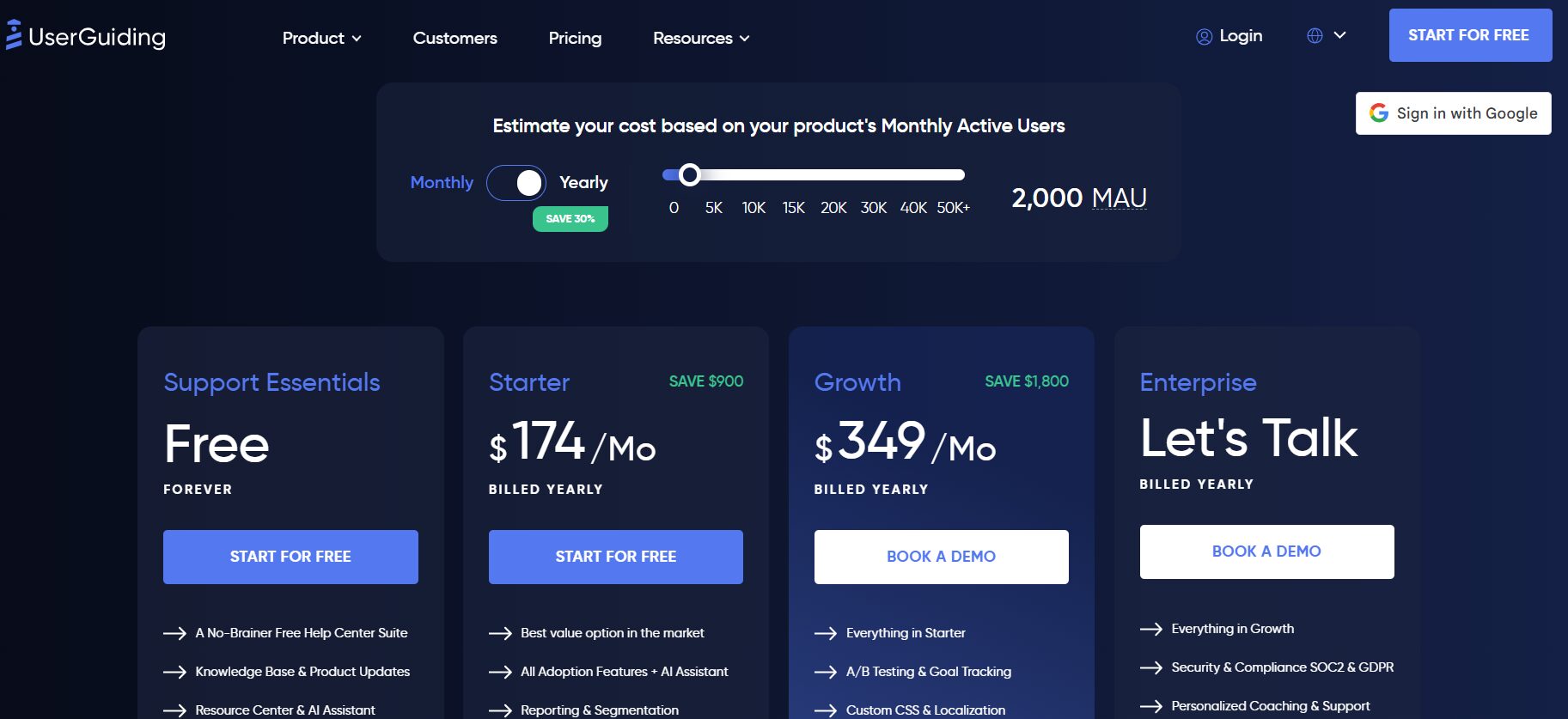
- Free Plan: Includes a knowledge base, product updates, an AI assistant, and a resource center.
- Starter Plan: $174/month (billed annually) for up to 2,000 MAUs, includes interactive guide and surveys.
- Growth Plan: $349/month (billed annually), adds A/B testing, segmentation, custom CSS, and more guides.
- Corporate Plan: Starting around $499/month; includes SSO, SOC2/GDPR compliance, and premium support.
Verdict
- Choose UserGuiding if you want quick, interactive onboarding inside your app and value affordability and segmentation tools.
7. Tango
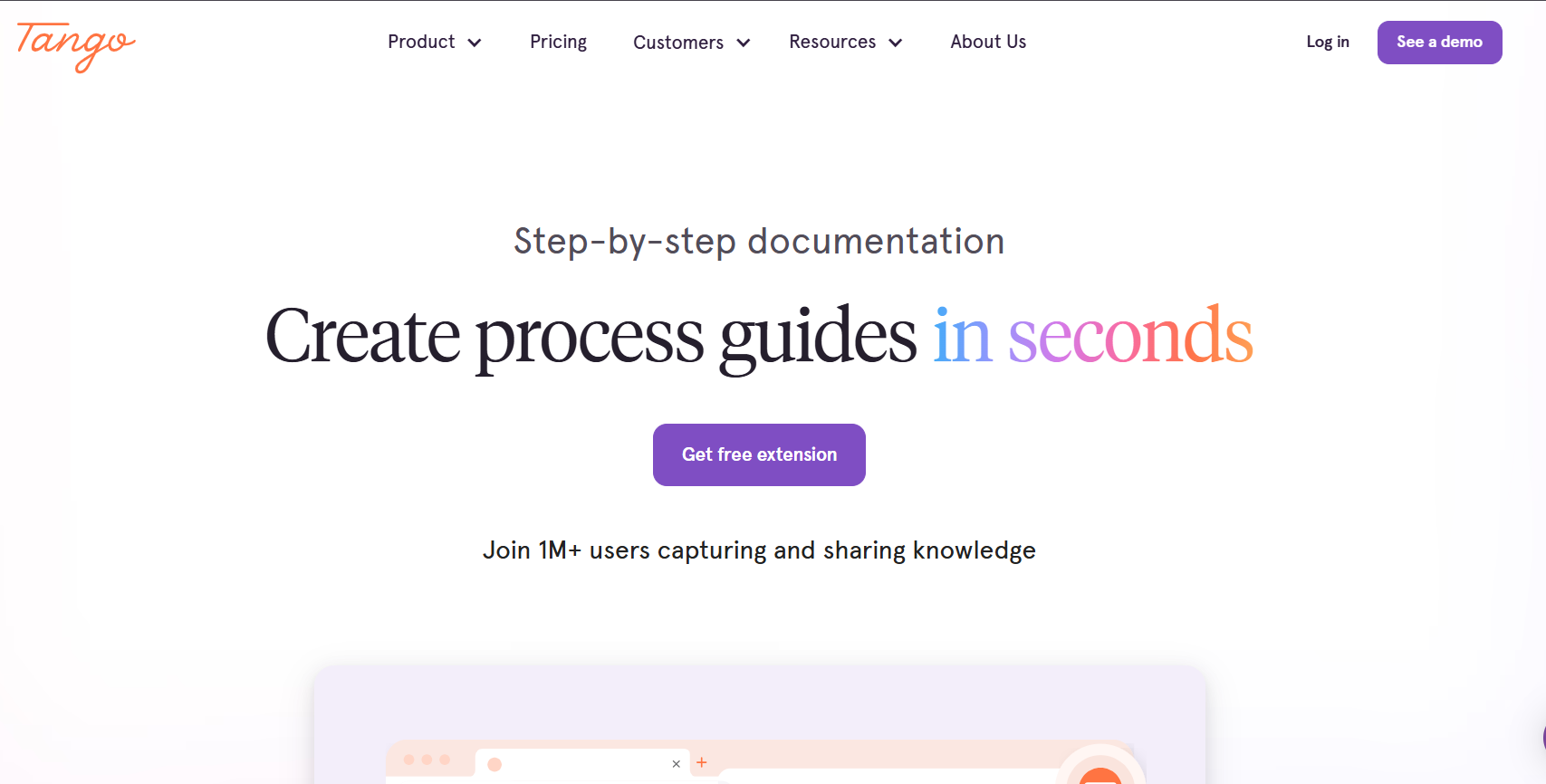
Overview
Tango is a process documentation tool that auto-generates step-by-step guides by capturing your on-screen workflow.
It includes smart editing tools (arrows, blur, highlights) and a distinctive “Guide Me” playback feature (an overlay) that directs users through a live process based on your capture.
How Tango differs from FlowShare
Here’s how Tango and FlowShare measure up:
| Feature | Tango | FlowShare |
| Platform support | Browser extension and desktop app (cross-platform) | Windows-only desktop application |
| Guide playback | Interactive overlay (“Guide Me”) walks users through | Static outputs (PDF, PPT, HTML) require separate viewing |
| Editor capabilities | Annotate with arrows, shapes, blur, and re-order steps | Advanced formatting options, but less flexible UI |
| Sharing & integration | Embed guides into Notion, Slack, and Google Docs; link | Export files; sharing is limited to files or the FlowShare Portal |
| Pricing | Free tier + Pro at ~$20/user/month, unlimited workflows | Starts—$40/user/month for a single license |
- Tango’s Guide Me mode lets users actively follow steps in real-time, unlike FlowShare’s static docs.
- It offers cross-platform compatibility from the start (browser and desktop), whereas FlowShare stays on Windows.
- Tango’s free plan is generous, and its Pro tier is more accessible than FlowShare, especially for teams.
Pros
- Easy to get started with intuitive capture and editing in Tango.
- Interactive playback makes walkthroughs more engaging.
- Affordable Pro plan and generous free tier for small teams.
- Seamless integration with tools like Notion, Slack, and Google Docs.
Cons
- The free version limits the number of workflows and includes watermarks.
- The Guide Me overlay can be distracting in some window configurations.
- Desktop capture may still lag behind FlowShare’s local execution in edge cases.
Pricing
- Free Plan: Up to 15 shared workflows, browser-only capture, basic editing/sharing, watermark, for a maximum of 10 users per workspace.
- Pro Plan: ~$20/user/month (annual billing)—includes desktop and browser capture, unlimited workflows, branded exports (no watermark), and viewership insights.
- Enterprise: Custom pricing—SSO, SCIM, advanced permissions, PII blurring, on-screen guidance, and admin/analytics dashboards.
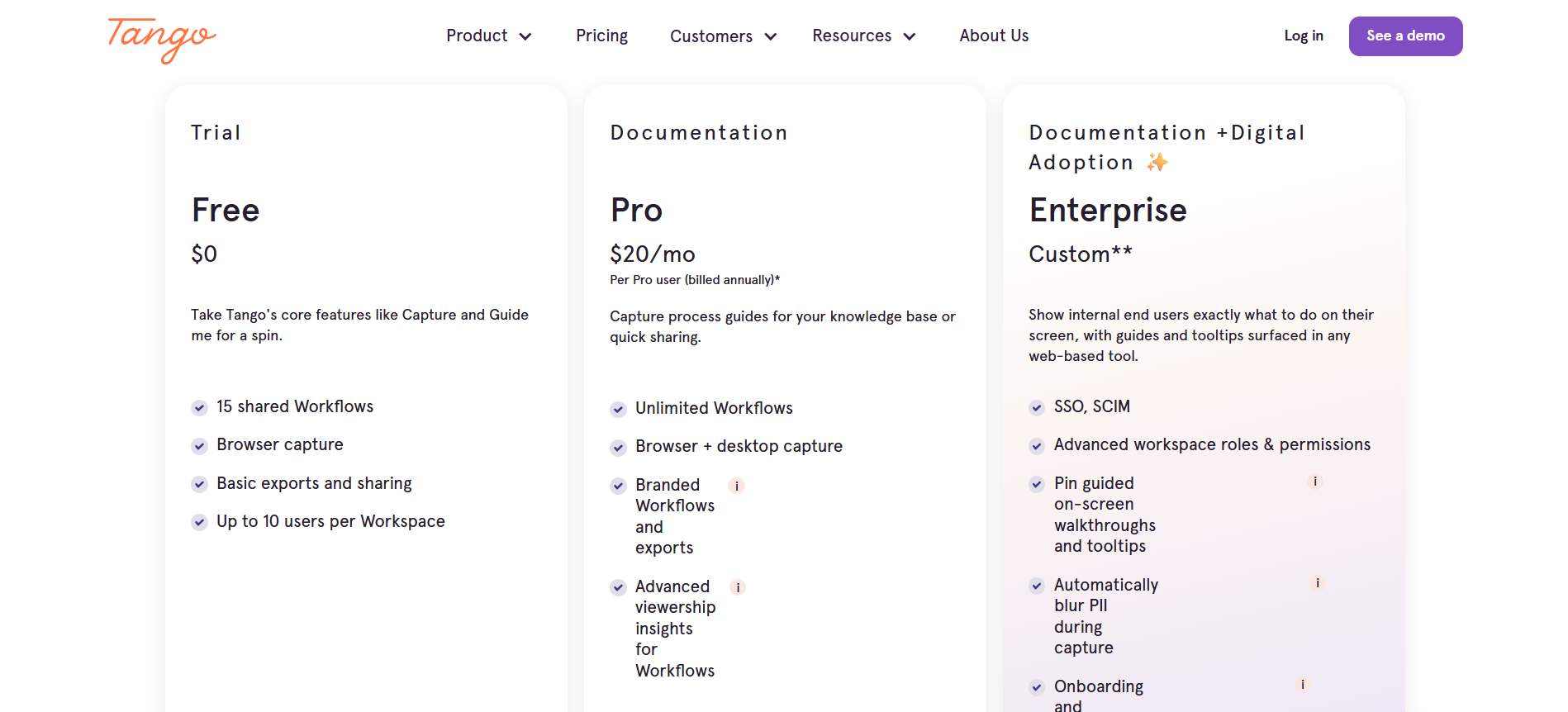
Verdict
- Use Tango if you want a modern, interactive capture experience that’s easy to share and doesn’t tie you to Windows.
Here’s an in-depth comparison of SweetProcess and Tango.
8. Folge
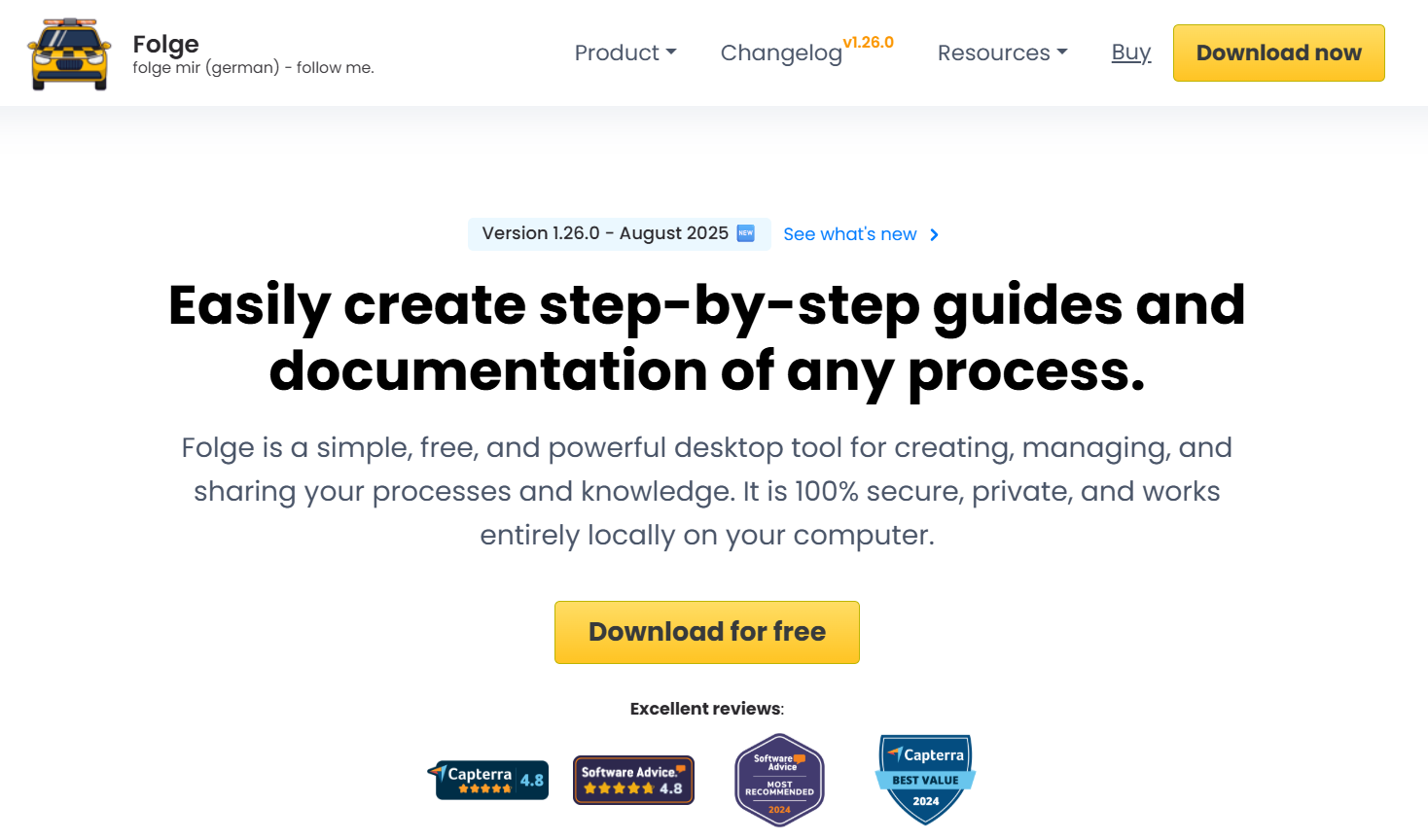
Overview
Folge is a desktop-first process documentation tool available for both Mac and Windows.
Folge runs entirely offline, so all your work stays private and local. It auto-recaptures your workflow (screenshot on each click), offers strong annotations, nested steps, and lets you export your guides in up to seven formats (PDF, Word, PowerPoint, HTML, Markdown, JSON, and more).
How Folge differs from FlowShare
Here’s a closer look at how Folge differs from FlowShare:
| Feature | Folge | FlowShare |
| Platform model | Desktop-only, offline-first, local (no cloud upload) | Windows-only desktop app |
| Export formats | Exports to 7 formats: PDF, Word, PPT, HTML, Markdown, JSON | Exports to PDF, Word, HTML—fewer format options |
| Ownership/price model | One-time purchase (often $75–117), lifetime updates | Per-user subscription (— $40/user/month) |
| Annotations & editor | Rich WYSIWYG editor, nested steps, blur/redact, custom CSS | Strong formatting, but less offline-friendly editing |
| Privacy | Fully local with no cloud syncing | All data and projects are stored locally |
- Offline-first and private: Folge keeps everything on your computer; excellent for protecting sensitive data or secure environments.
- Flexible exports: You get more format choices out of the box—especially useful for diverse documentation needs.
- No recurring fees: One purchase gives you access forever; FlowShare charges monthly/user.
Pros
- Privacy-first: all process capture stays local to your device.
- One-time purchase: significantly lower long-term cost ($89-155).
- Feature-rich editor: nested steps, full annotations, drag-and-drop cover pages.
- Strong export flexibility: (7 formats) as well as Confluence, WordPress, and Help Scout compatibility.
Cons
- Desktop-only with no browser extension or cloud sync.
- No free trial for full features, though the free version is functional for up to 3 guides.
- Lacks real-time collaboration or team-based access control.
Pricing
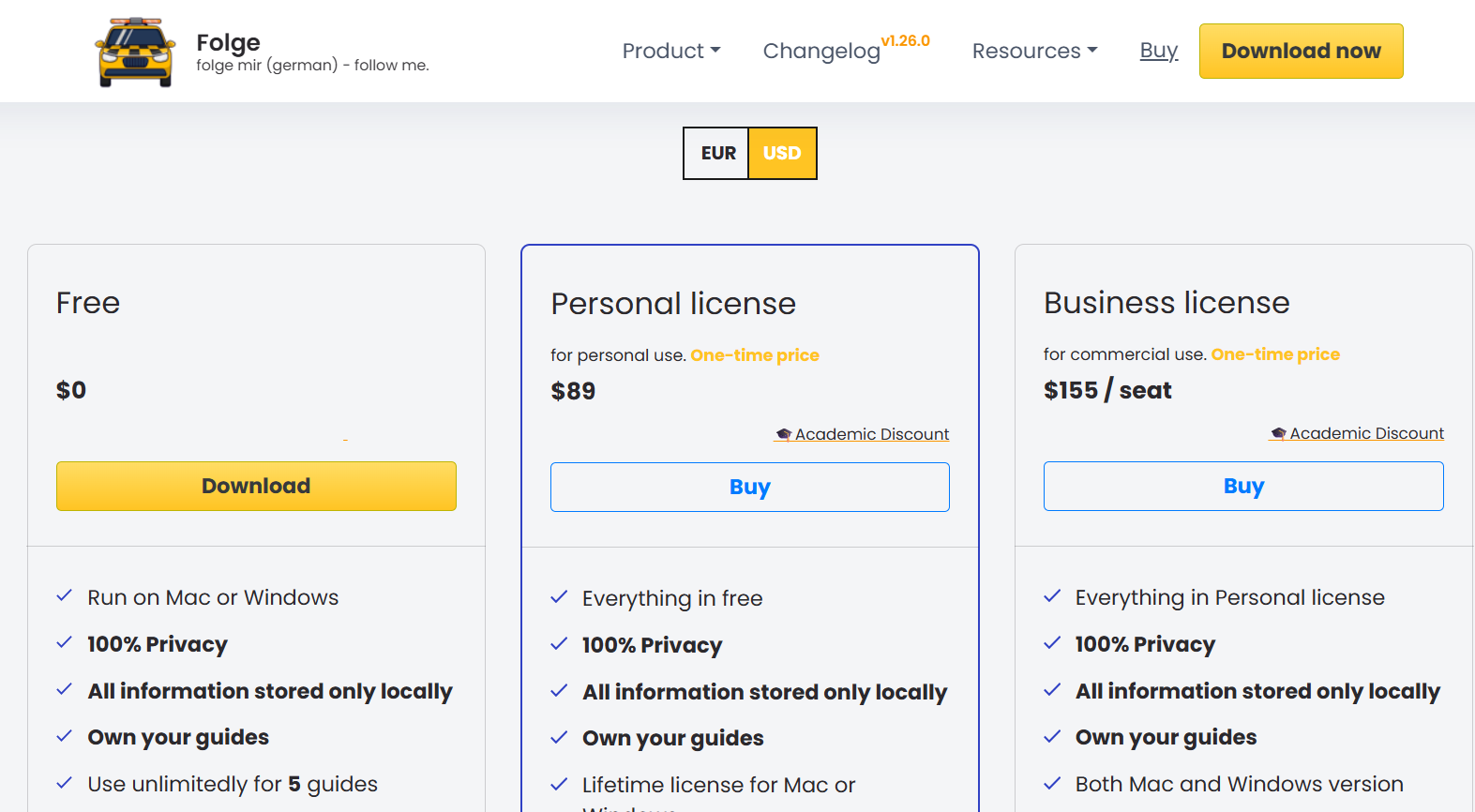
- Free Version: $0 forever, includes annotation tools, PDF export, up to 5 guides.
- Personal License: $89 one-time. Includes unlimited guides, no watermark, and lifetime updates.
- Business License: $155 per seat. Adds priority support, multi-user management, and transferable licenses.
Verdict
- Choose Folge if you prefer a one-time purchase model, offline process capture, and export flexibility.
9. ClickLearn
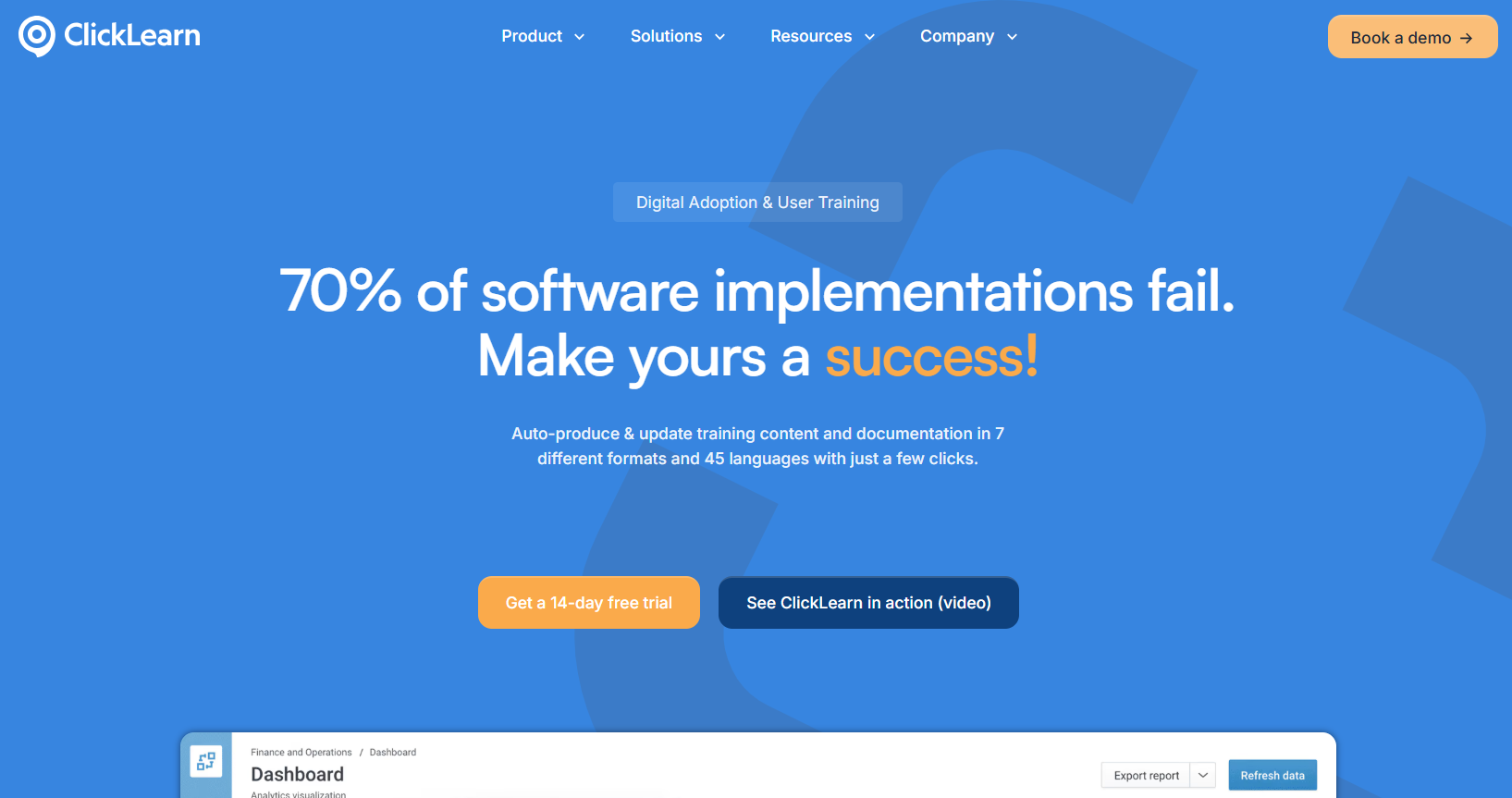
Overview
ClickLearn is a powerful Digital Adoption Platform (DAP) for large enterprises using complex software like SAP, Microsoft Dynamics, Oracle, and Salesforce. It captures your workflows and spontaneously auto-generates training content.
These include everything from narrated videos and PDFs to presentation decks and interactive simulations available in seven formats and over 45 languages.
Plus, its Replay tech ensures materials stay updated with every system change.
How ClickLearn differs from FlowShare
Here are the key differences between ClickLearn and FlowShare:
| Feature | ClickLearn | FlowShare |
| Output formats | 7 formats (video, PDF, PPT, interactive, etc.) and 45+ languages | Static exports (PDF, Word, HTML) |
| Update capability | Auto-updates documentation when the software or process changes | Requires manual re-capture and export |
| Internal portal & Virtual assistant | eLearning portal + in-app assistant (UXP) for guidance | Outputs are stored externally |
| Integration scope | Supports ERP/CRM systems (Dynamics, SAP, IFS, Oracle, etc.) and virtual desktops | General desktop capture; focused on UI walkthroughs |
| Licensing & pricing | Subscription or perpetual; custom quotes based on system and licensing model | Per-user subscription (~$40/user/month) |
- ClickLearn builds full-blown training materials and an assistant panel inside your software, while FlowShare delivers “offline” guides.
- Built for enterprise deployments from integrations to multilingual training.
- ClickLearn auto-updates with process changes, which FlowShare does not automate.
Pros
- Efficient content generation across multiple formats and languages with a single click.
- Auto-replay and update content keep documentation accurate and current.
- Integrated learning portal and virtual assistant (UXP) improve adoption and usability.
Cons
- High complexity and cost.
- Training content may lack organization-specific language; a normal editing step is required for personalization.
- Licensing is quote-based with mixed pricing models (subscription or perpetual).
Pricing
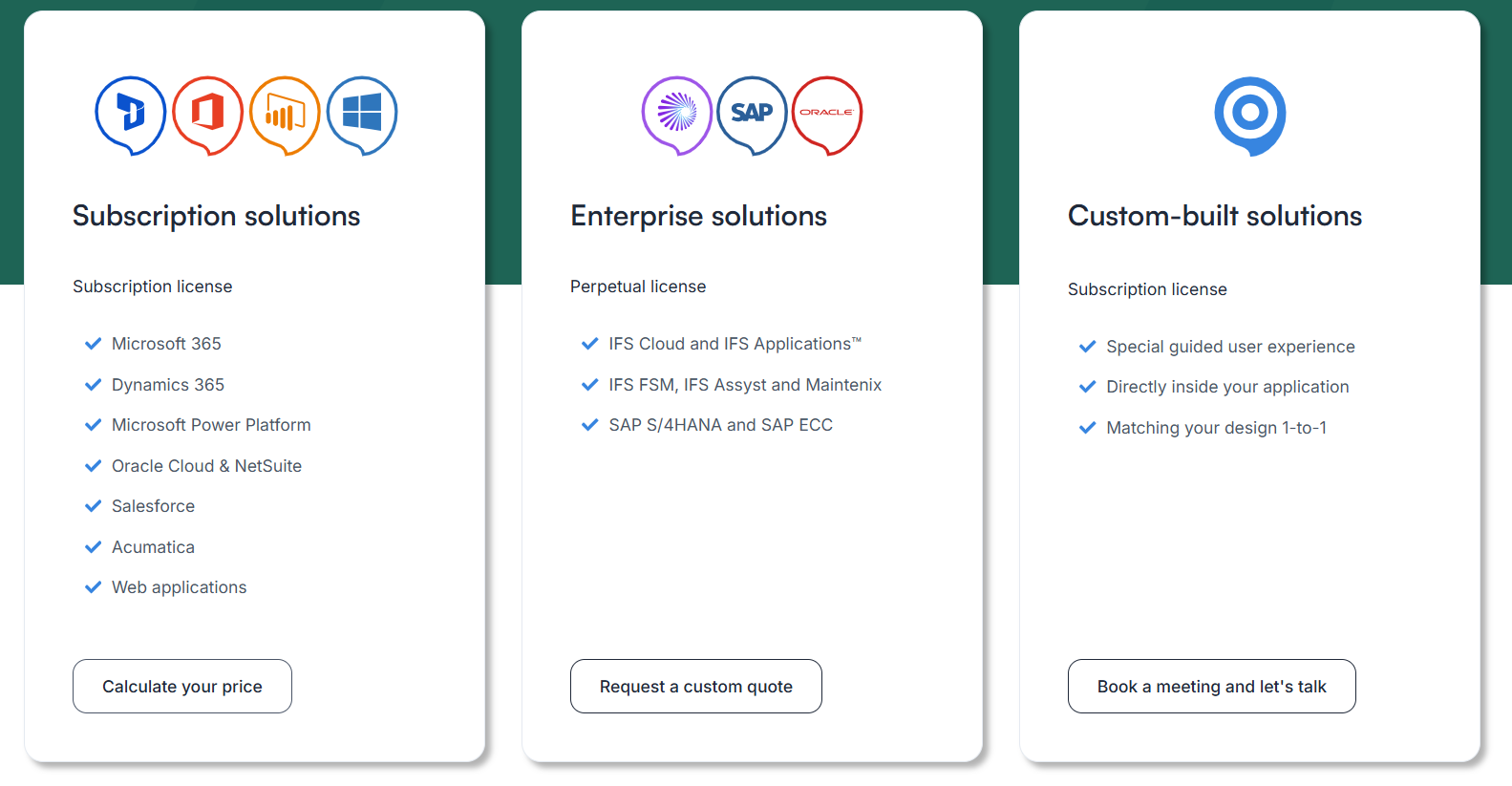
ClickLearn does not list prices publicly. They offer subscription-based licensing for systems like Dynamics, Oracle, Salesforce, and perpetual licenses for platforms like SAP and IFS—both via custom quotes.
Verdict
- If you’re an enterprise managing complex ERP/CRM deployments that need scalable training materials, in-app guidance, and automated content upkeep, choose ClickLearn.
Which FlowShare Alternative Should You Choose for Process Documentation?
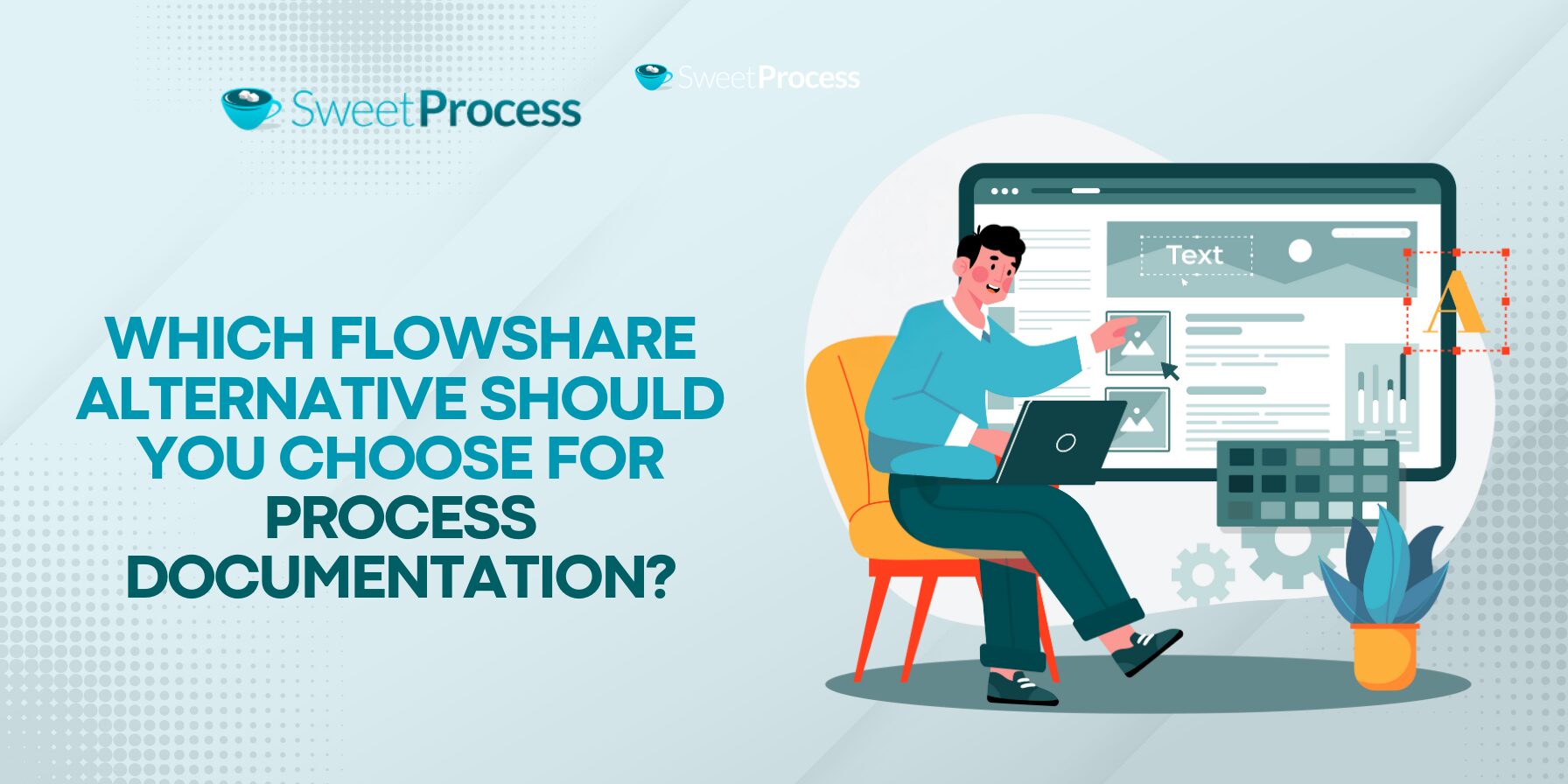
Before you decide on a FlowShare alternative, do you need to create static guides or something more dynamic? Are you planning to document a few processes or preparing for a large-scale training program? And finally, what budget do you have in mind—something affordable for a lean setup, or a larger-scale enterprise option?
Here’s a quick recap of our top picks:
- SweetProcess: A complete solution for capturing, organizing, and updating processes across teams.
- Dubble: Lightweight, affordable, and great for creating quick guides with video integration.
- Scribe: Fast and intuitive for individuals or small teams documenting web apps.
- WalkMe: Enterprise alternative for large-scale, in-app training and adoption.
- Whatfix: A more flexible and easier-to-manage alternative to WalkMe with strong update features.
- UserGuiding: Cost-friendly onboarding and in-app tours for SaaS and mid-size companies.
- Tango: Automated screenshots plus interactivity, with one of the best free plans.
- Folge: One-time purchase for simple, offline documentation with full ownership.
- ClickLearn: Built for enterprise rollouts, from user manuals to tests and video curricula.
No matter which FlowShare alternative you choose, the real win is making process documentation easier for your team.

